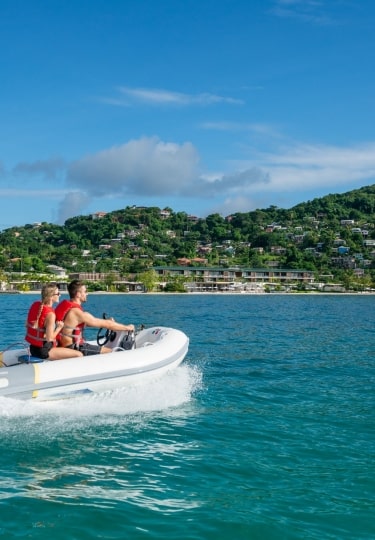How do you choose the best Caribbean island to visit? Some islands are deliciously sleepy, while others are decidedly lively. There are influences from French to Dutch to Spanish to bear in mind, with different languages, cultures, and cuisines to consider. Choosing, though, is all part of the fun.
Start your own shortlist with the Caribbean destinations below, which range from tiny Tortola to the vibrant island of Jamaica. Whichever you choose, you’ll be assured of beauty, warmth, and tropical delights.
Puerto Rico
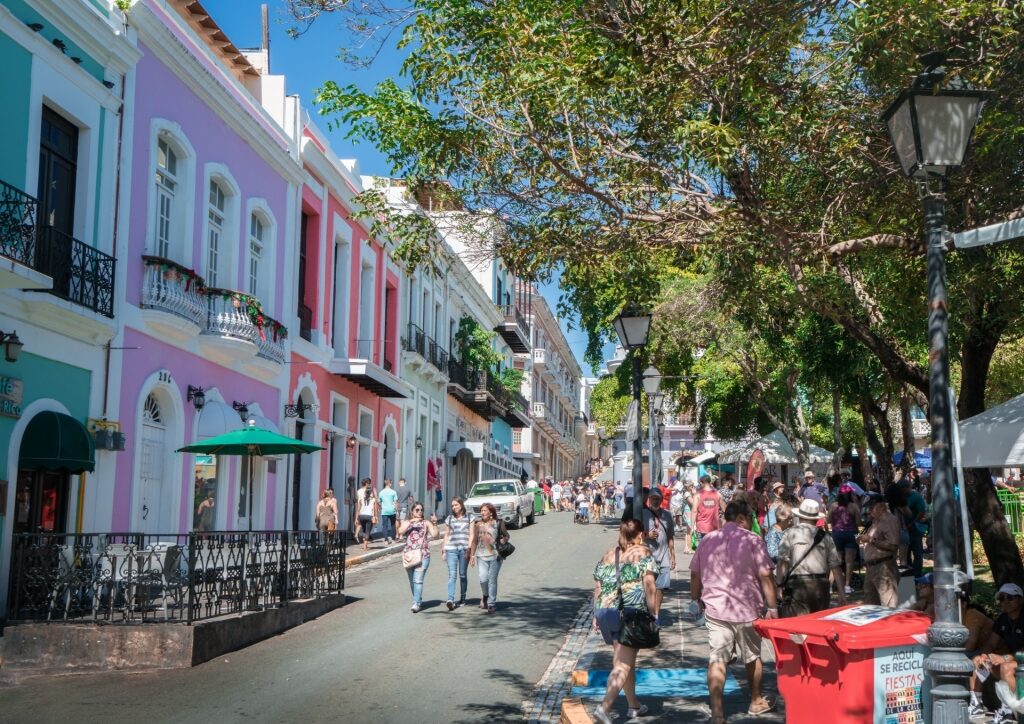
Old San Juan, Puerto Rico
Much of Puerto Rico’s appeal comes from its mix of Spanish heritage and present-day strong American influences. Puerto Rico’s beaches, cuisine, and natural beauty are considerable bonuses.
In Old San Juan, you can visit the historic forts of El Morro, and Castillo San Cristobal. Walk its cobblestone streets to see more of the colonial-era Spanish architecture.
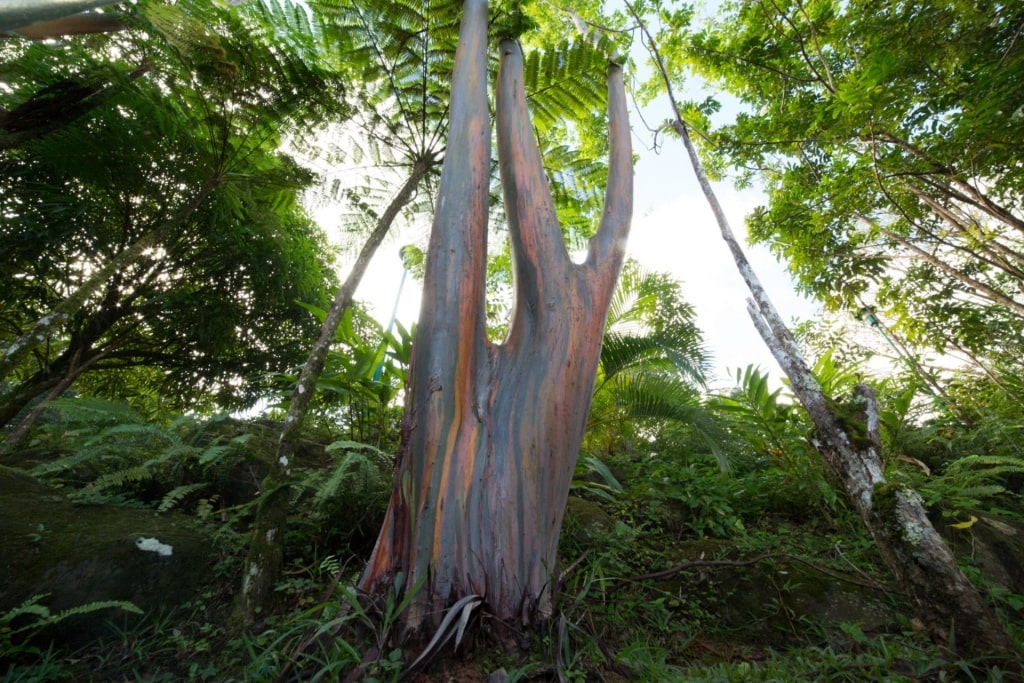
El Yunque National Forest, Puerto Rico
El Yunque National Forest is the only tropical rainforest in the U.S. National Forest System. You can hike to a waterfall, swim in a natural pool or zipline through the tree canopy.
Along the coast, you will find beaches that are perfect for sunbathing or surfing. The choice ranges from popular Isla Verde beach right in San Juan, to the more secluded Flamenco Beach on the island of Culebra.
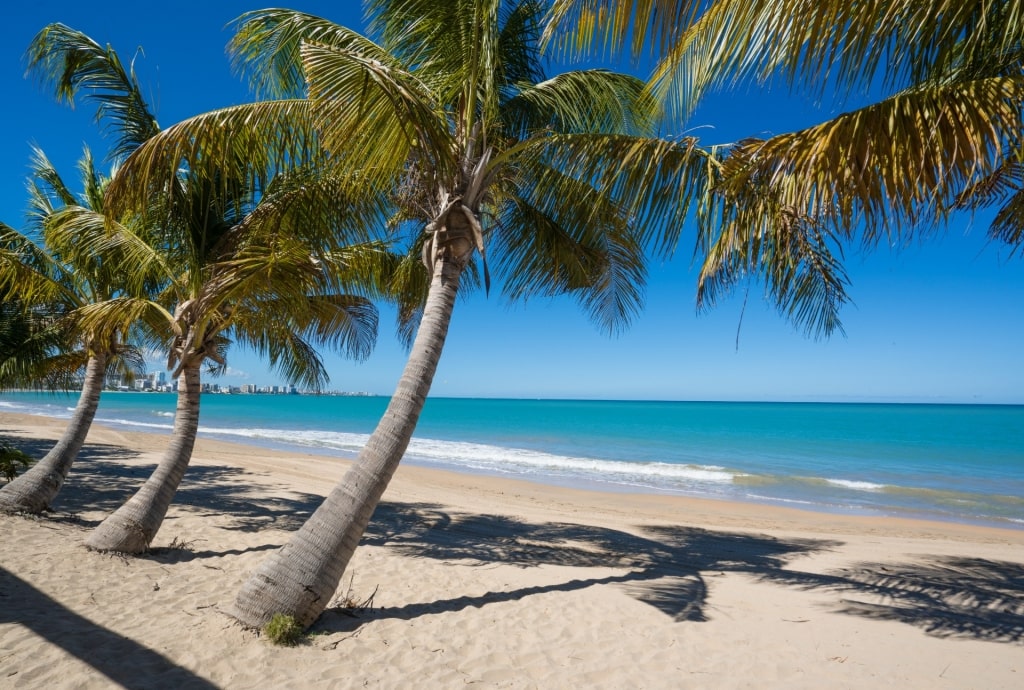
Isla Verde Beach, Puerto Rico
Lounging on the beach may well involve rum cocktails. Learn more about Puerto Rican rum on a tour of the historic Bacardi Distillery—and enjoy a tasting.
There is a lot more to the rich cultural heritage of Puerto Rico than rum, of course. The influence of Taino Indians, Spanish colonialism, African traditions, and the USA has given it music, salsa dancing, art, and a rich cuisine.
Barbados
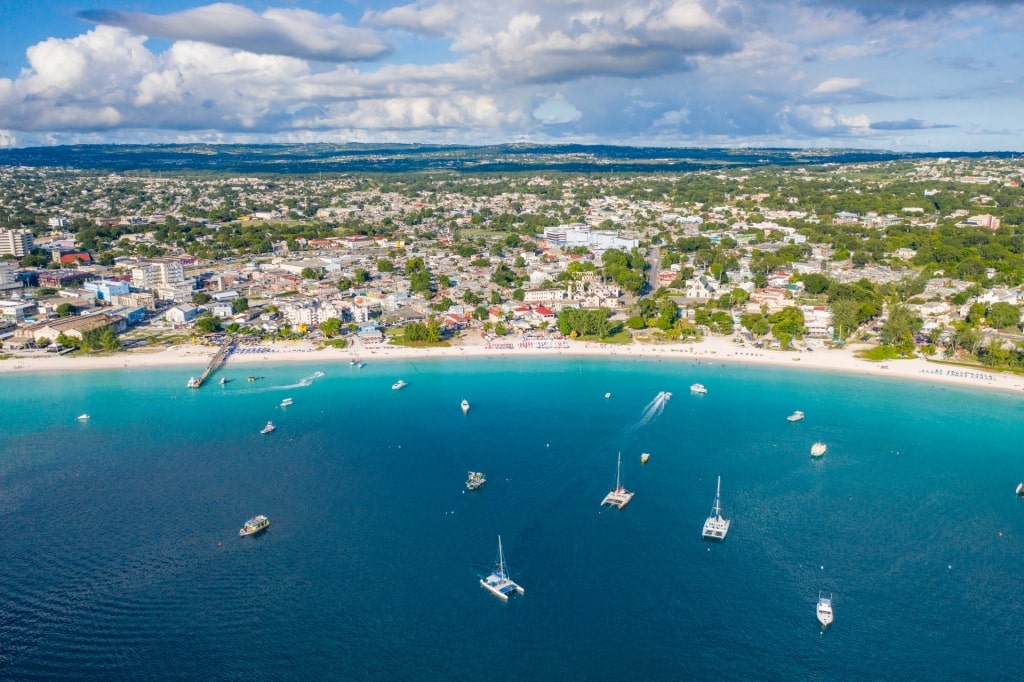
Barbados
Another island known for its rich culture, gorgeous beaches, and welcoming atmosphere, Barbados wins the heart of every visitor. Key to that is the warmth and humor of the Bajan people.
Having the beaches of Barbados at your front door would put anyone in a permanent good mood, of course. All boast bright white sand, with the west coast known for calm waters, and the east coast more rugged and wilder.
At Carlisle Bay, near the capital city of Bridgetown, you’ll find some of the clearest waters in the Caribbean for swimming, or watersports. Several shipwrecks and a coral reef, also attract divers, not to mention plenty of marine life.
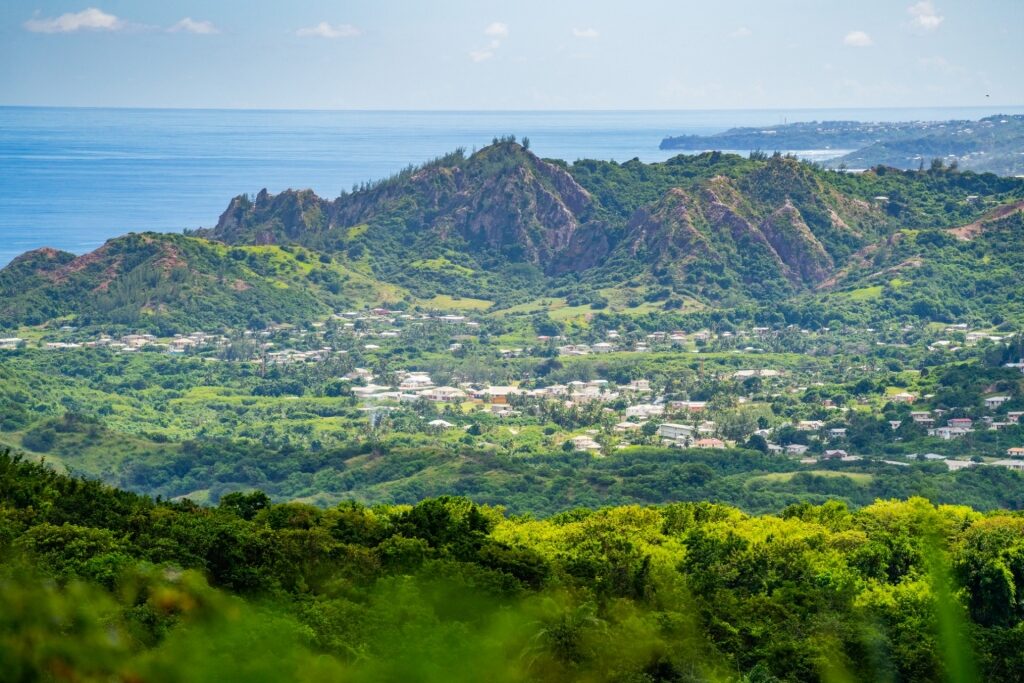
View from Farley Hill National Park, Barbados
Farley Hill National Park has breathtaking views of the island’s eastern coastline. Farley Hill Great House is a former mansion whose grounds are now lush gardens, with walking trails, and picnic areas.
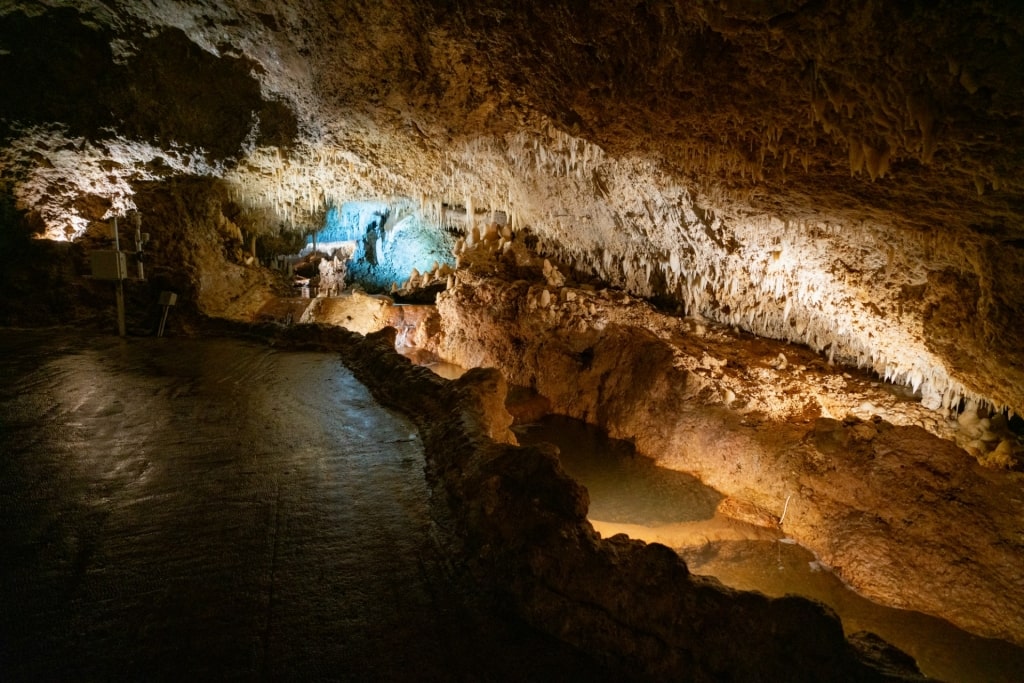
Harrison’s Cave, Barbados
For something very different, visit Harrison’s Cave in the island’s central uplands. A guided tram tour will show off its amazing stalactites, stalagmites, vast caverns, and underground streams.
Bridgetown is a UNESCO World Heritage Site notable for its architecture, such as in the Garrison Historic Area. Learn more about the island’s history by being some of its well-preserved plantation houses, and moveable “chattel” houses.
St. Lucia
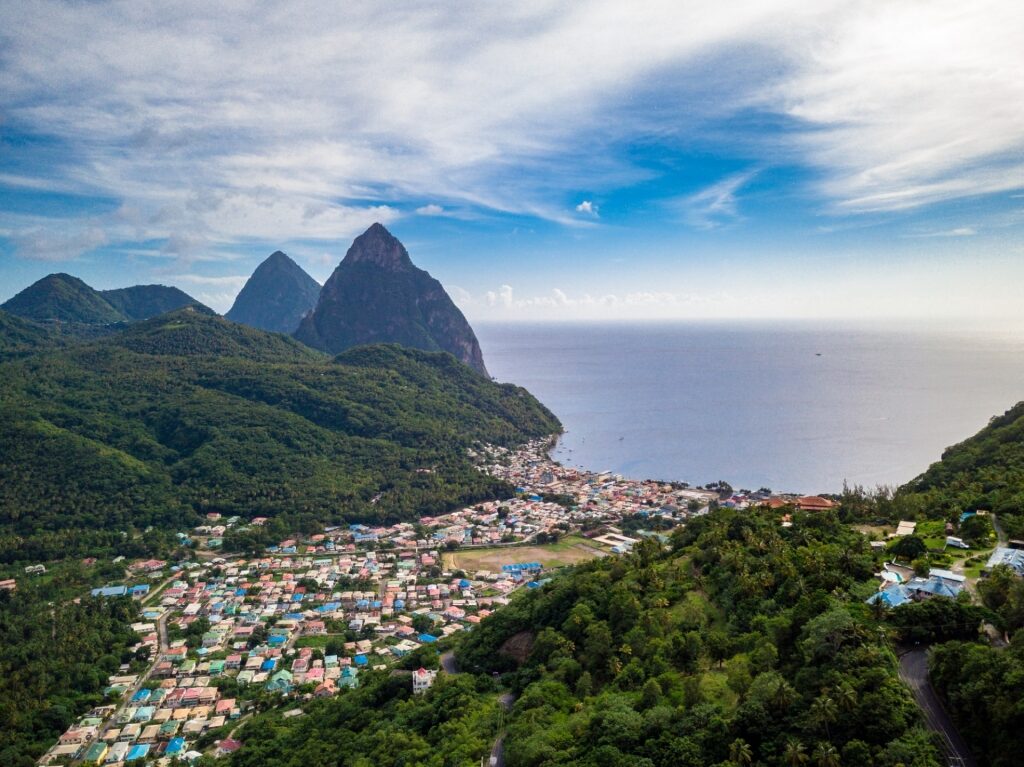
St. Lucia
St. Lucia is dominated by the twin peaks of the Pitons, Gros Piton and Petit Piton. They are symbols of an island known for the beauty of its beaches, as well as its lush center.
One of the best things to do in St. Lucia is to hike round the Pitons, or climb them, to take in that verdant tropical interior. You can also enjoy muddy guided excursions by ATV or on horseback.
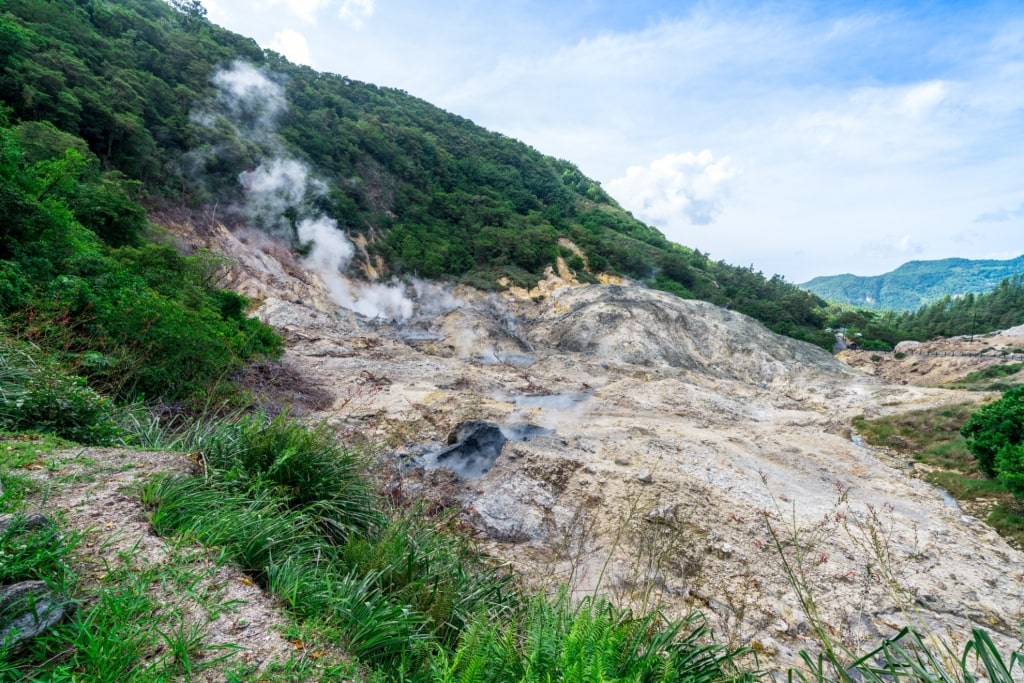
Sulphur Springs, St. Lucia
Wash off in the hot Sulphur Springs at “The World’s Only Drive-In Volcano”. Alternatively, you can go even further with a proper, healing mud bath.
There are more mineral baths at Diamond Falls Botanical Gardens, a beautiful tropical showpiece overlooked by the Pitons. The 56-foot waterfall is, literally, a highlight whose mineral-rich waters take various hues.
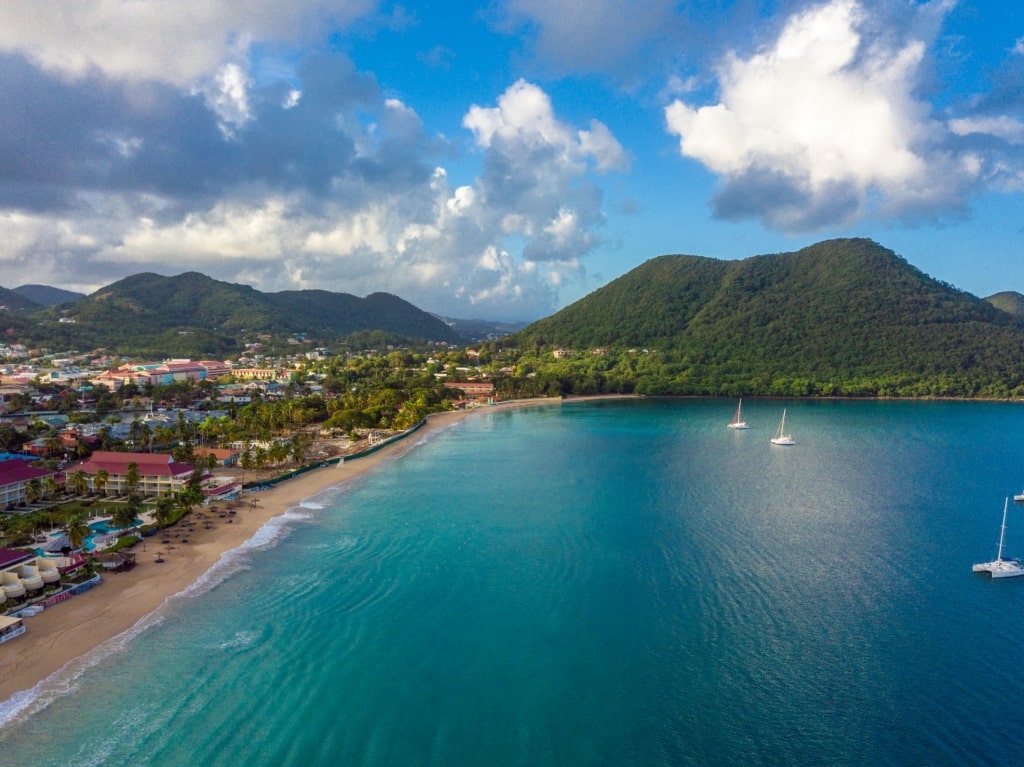
Reduit Beach, St. Lucia
Hit the water in a different way at Reduit Beach in Rodney Bay on the northwest coast. One of the island’s longest beaches is backed by resorts, so you’ll never run out of options for watersports, eating, or drinking.
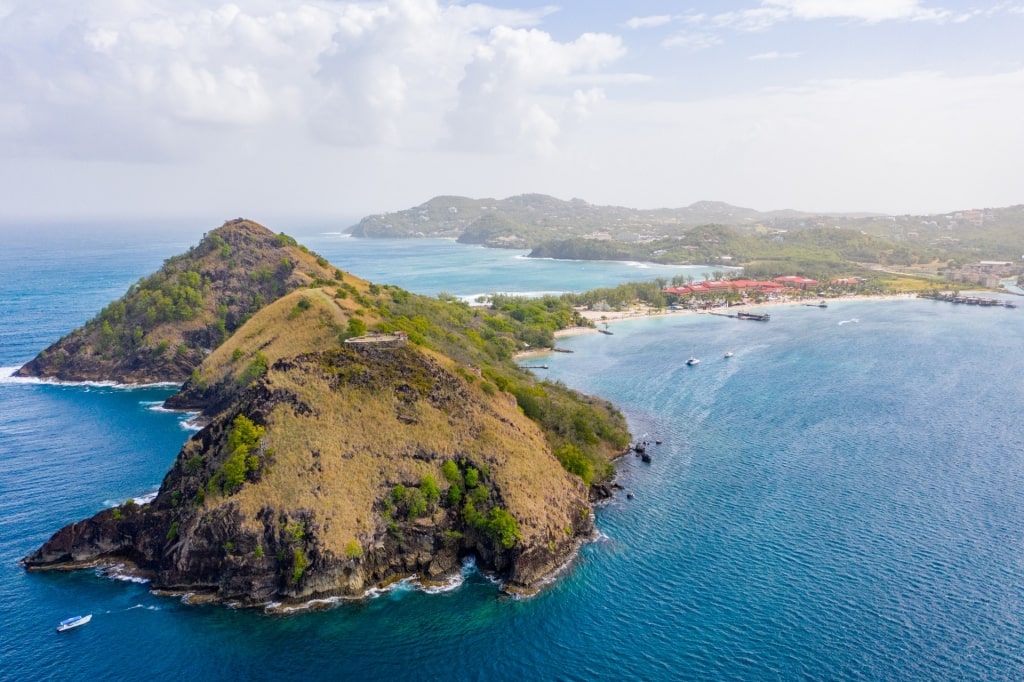
Pigeon Island National Park, St. Lucia
Pigeon Island National Park is home to even more of St. Lucia’s beautiful beaches. This historic site also has splendid views of nearby Martinique from the military fortifications built to once defend against the French neighbors.
Cozumel
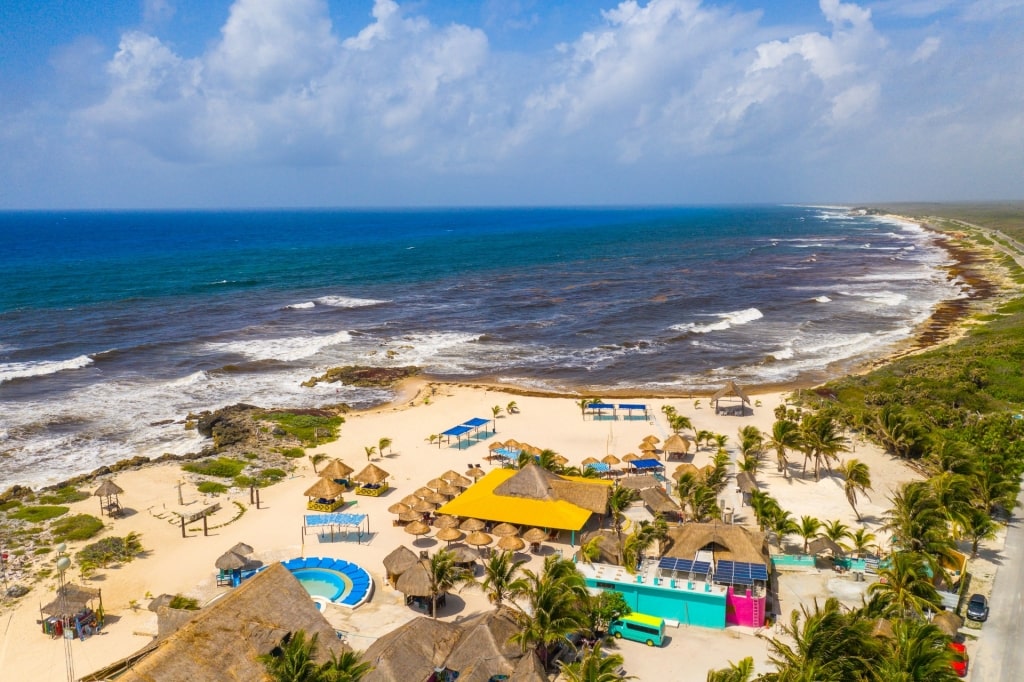
Cozumel
The Mexican island of Cozumel stands out as a Caribbean destination for its offshore reef. The Mesoamerican Barrier Reef is the world’s second-largest coral reef system.
That makes Cozumel one of the best diving spots in the world, as well as a wonderland for snorkelers. You can see the reef at its best in Cozumel National Marine Park, in the island’s south.
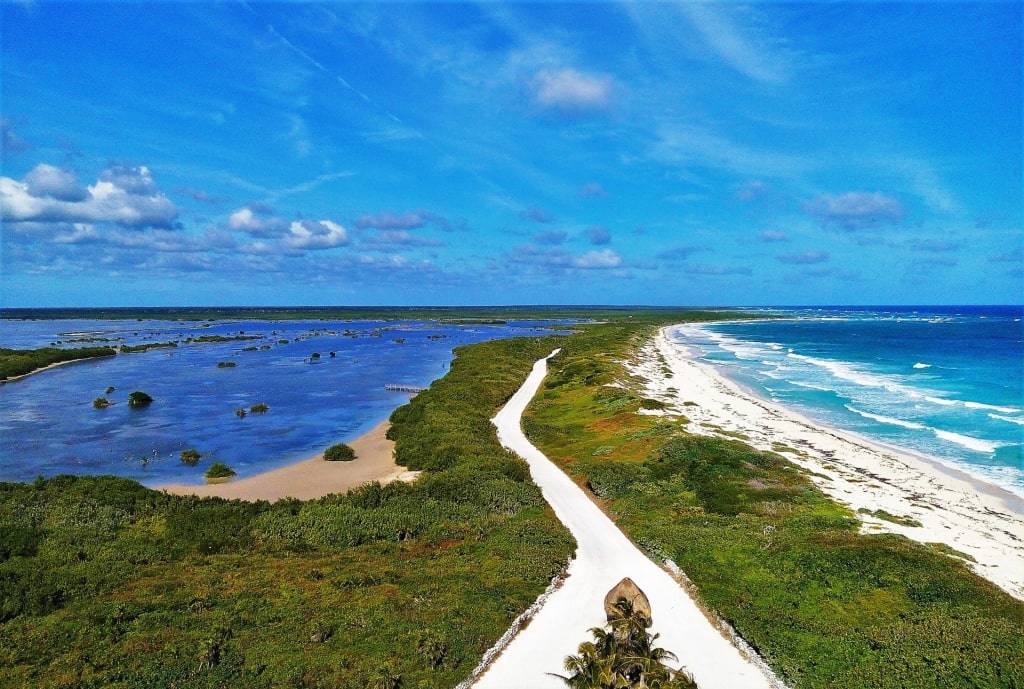
Punta Sur Eco Beach Park, Cozumel
At the very southern tip is Punta Sur Eco Beach Park. As well as swimming and snorkeling, you’ll discover a lighthouse, a crocodile habitat, and some of the best beaches in Cozumel here.
The park is also good for bird watching, or to just enjoy the island’s natural beauty. Some 65 different bird species have been seen on Cozumel, including nine found only here.
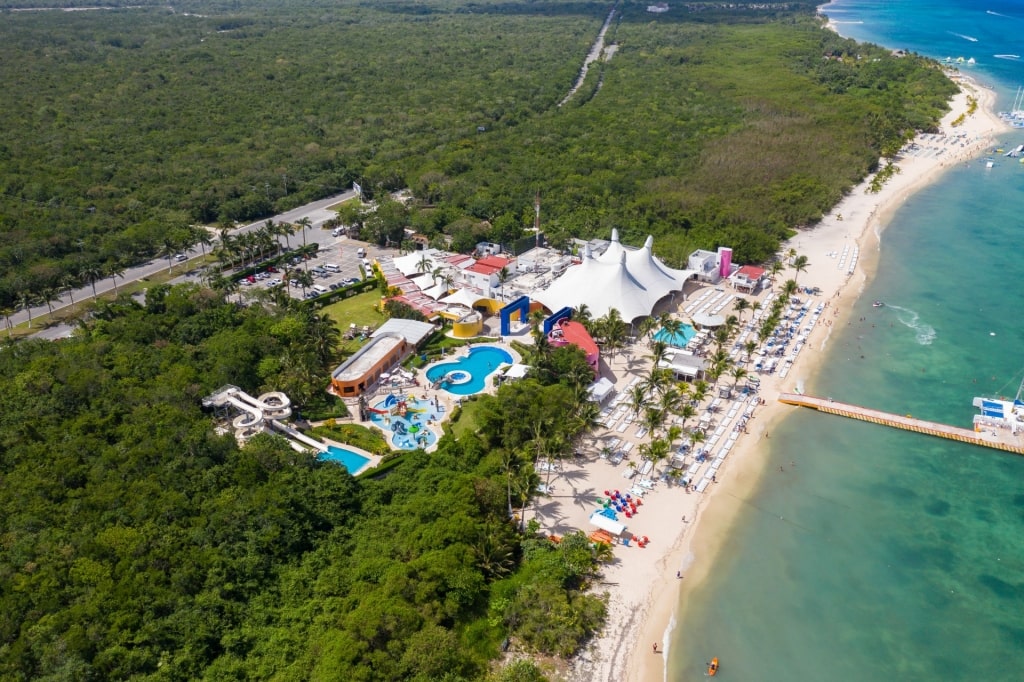
Playa Mia Grand Beach Park, Cozumel
There is an even wider range of activities at Playa Mia Grand Beach Park. These range from water slides to salsa dancing and cooking lessons.
Cozumel is a base for visiting notable Maya sites on the mainland such as Chichen Itza. However, it also has much smaller, but picturesque sites of its own at San Gervasio and El Cedral.

Tulum, near Cozumel
From Cozumel, visitors can also easily take a ferry to the resort of Playa del Carmen. Besides being an attractive shopping town in itself, it’s close to the scenic Riviera Maya site of Tulum.
Jamaica
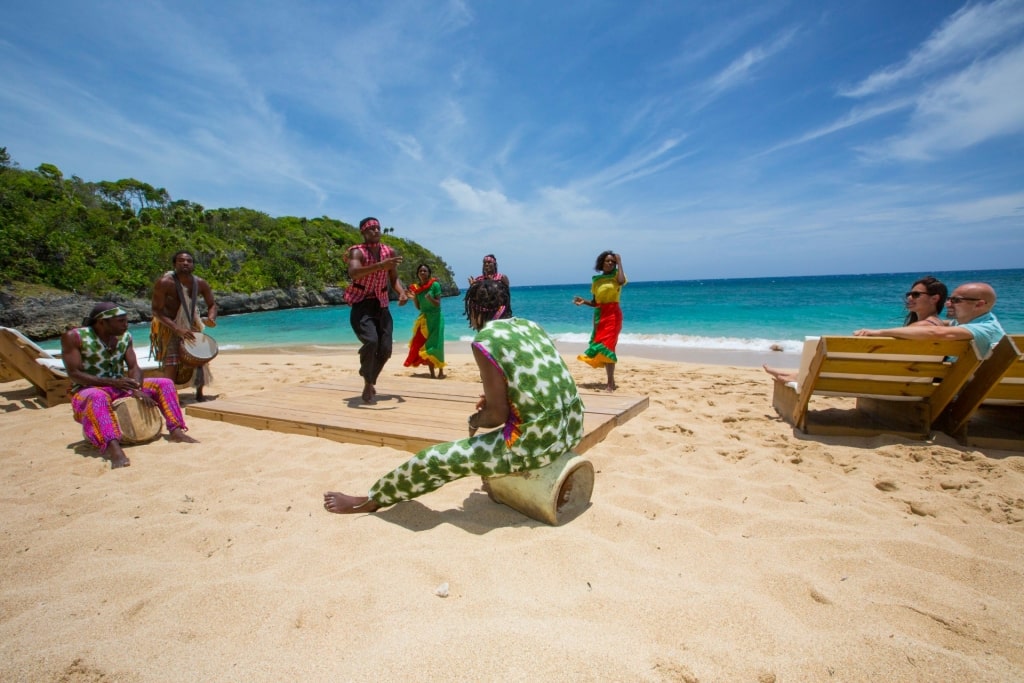
Bamboo Beach, Jamaica
Anyone who has ever heard reggae music knows about the infectiously relaxed culture of Jamaica. To that laid-back vibe, it adds the appeal of amazing beauty and natural wonders.
The longest beach in Jamaica, Seven Mile Beach in Negril, is the first stop for many visitors. Soft white sand and turquoise waters are a given there, and on others such as Doctor’s Cave Beach and Frenchman’s Cove.
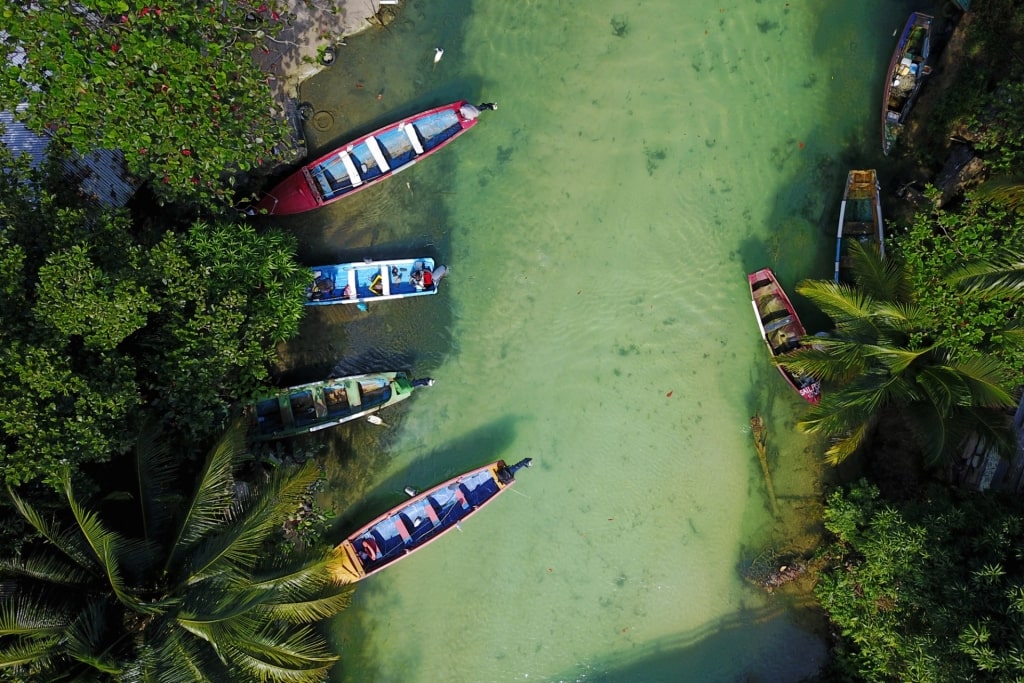
White River, Jamaica
To cool down after a spot of sunbathing, try floating down the White River on an inner tube. This Ochos Rios attraction is a chance to see the beauty of Jamaica’s tropical forests lining each riverbank.
Also near Ochos Rios is Dunn’s River Falls, which you can climb with a guide. From the top, you have breathtaking views of the surrounding landscape.
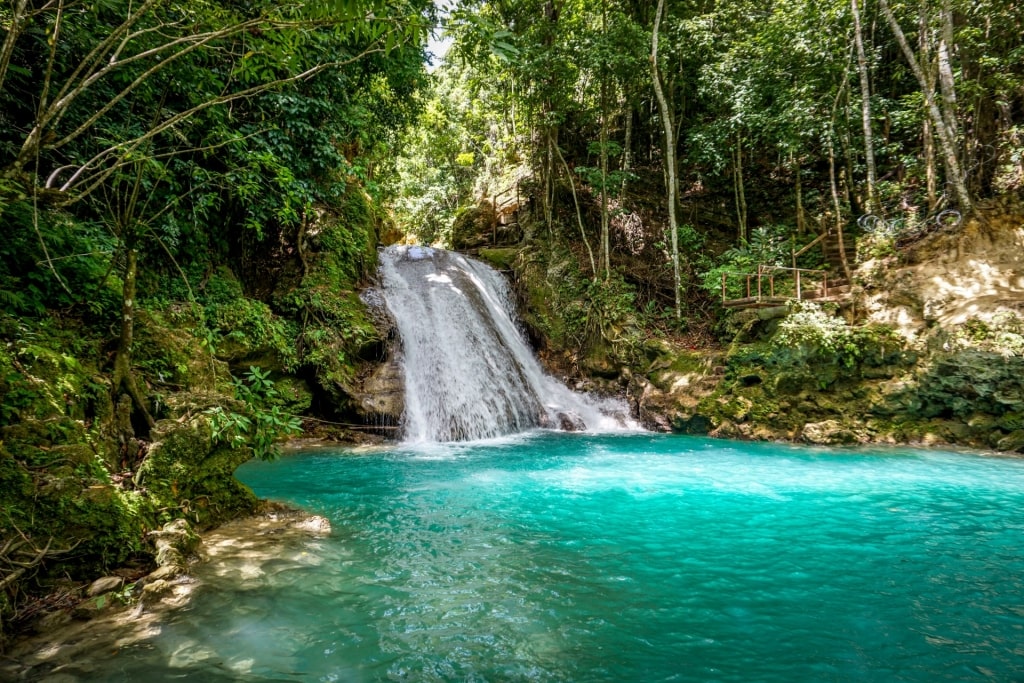
Blue Hole, Jamaica
One the far west of the island is Blue Hole Mineral Spring. Take a dip in the mineral-rich waters, enclosed by rocks, and greenery.
If you have time, a trip into the Blue Mountains is a chance to go hiking or visit a coffee plantation. Enjoy some local coffee after a meal featuring local dishes that Jamaica is known for such as jerk chicken, curry goat, or ackee.
Martinique
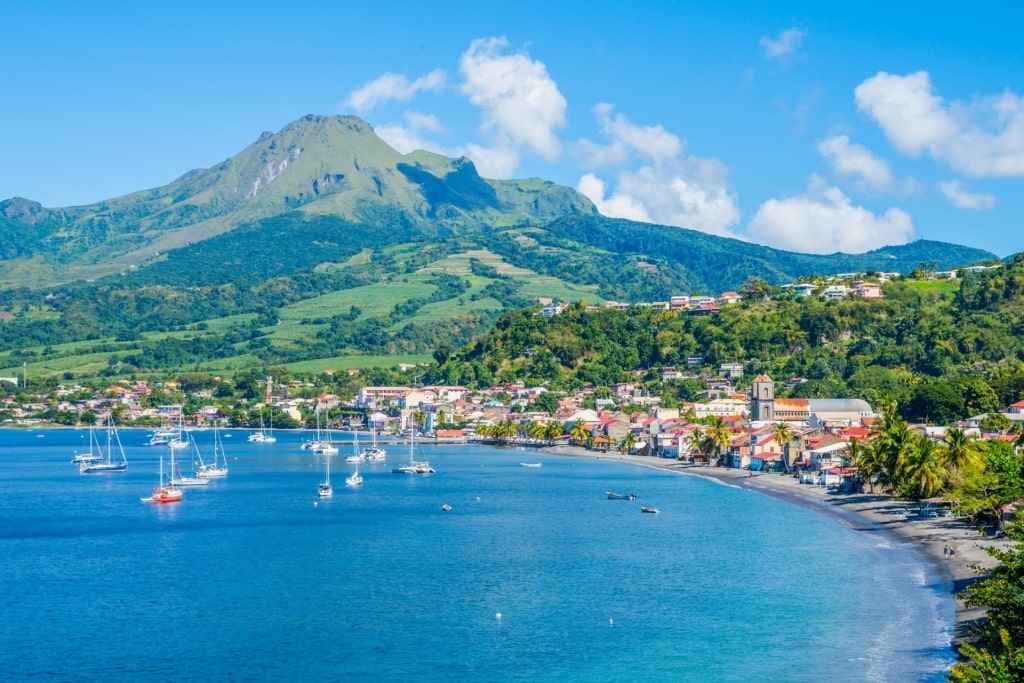
Saint Pierre, Martinique
An overseas region of France, Martinique combines the best of European style and Caribbean charm. You’ll see this winning combination in the food, culture, and architecture.
Naturally, you’ll want to start any visit on one of the island’s beaches. Les Salines, Anse Dufour, and Anse Mitan are among the best, with typical Caribbean white sands, turquoise waters, and plenty of water sports, bars, and restaurants.

Mount Pelée, Martinique
Behind the stunning Caribbean beaches is that tropical interior, with rainforest, and mountains. The volcanic peak of Mount Pelée is a beacon, known for a 1902 eruption that was the worst of the 20th century.
This wiped out the town of Saint-Pierre, known as the “Paris of the Caribbean” for its culture. Some 30,000 people died, a story movingly told in the town’s Volcano Museum.
The ruins of the town point to the rich architecture of the period. You can see more of that in Fort-de-France, the capital, in landmarks such as Fort Saint-Louis.
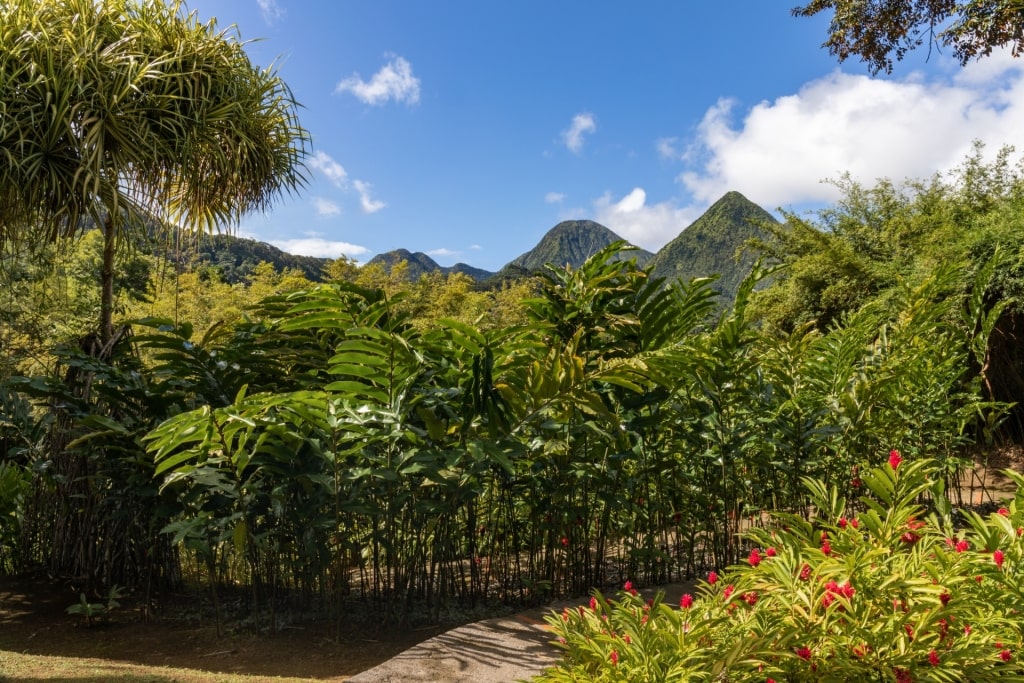
Balata Garden, Martinique
One of the best things to do in Martinique is to explore Habitation Clément, a former sugarcane plantation, which also gives insight into the island’s history and flora. See even more plants, and birds, while walking in the Balata Garden, a botanical garden just outside Fort-de-France.
Martinique’s cuisine makes use of tropical ingredients, combined with French and Caribbean flair. Local specialties include accras (fish fritters), boudin (blood sausage), and many different Caribbean seafood dishes.
Grand Cayman
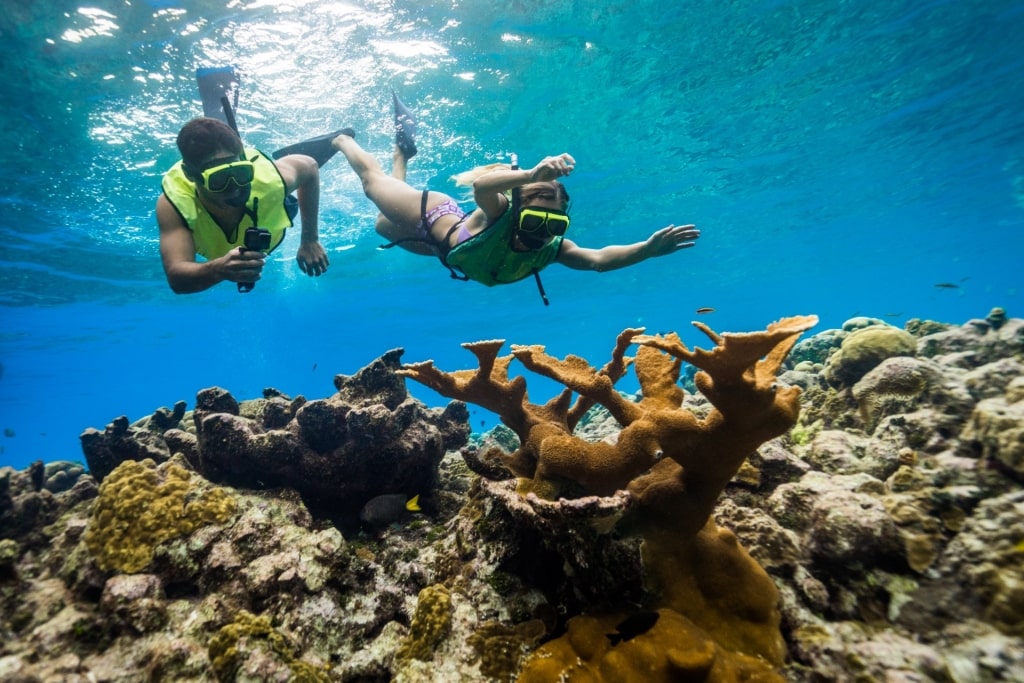
Snorkeling in Grand Cayman
The largest of the Cayman Islands, Grand Cayman is one of the best islands in the Caribbean. Grand Cayman’s beaches, reefs, and tropical beauty also make it a great place to relax on any type of holiday.
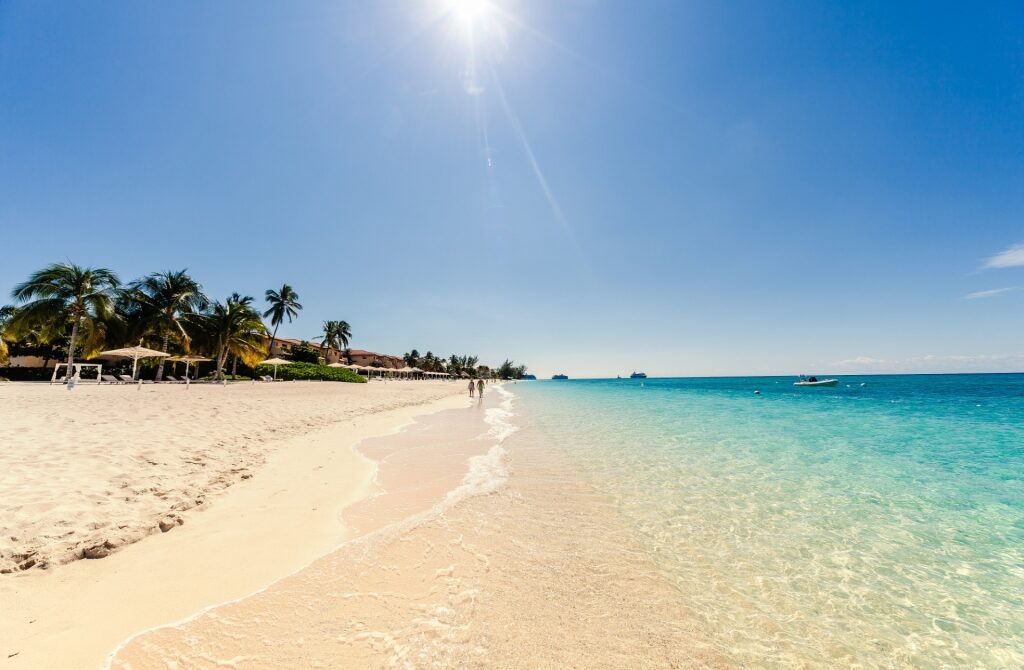
Seven Mile Beach, Grand Cayman
You don’t even have to go far from the capital, George Town (famed for its duty-free shopping), to start sunbathing. Seven Mile Beach starts on the edge of town, with its soft white sand running north into the distance.
With no rivers to carry run-off, the island’s waters are remarkably clear. This makes it a paradise for snorkelers, as well as divers. Some of the best dive sites in the world are found here. These include the Devil’s Grotto, just off George Town, and the deliberately sunken USS Kittiwake.
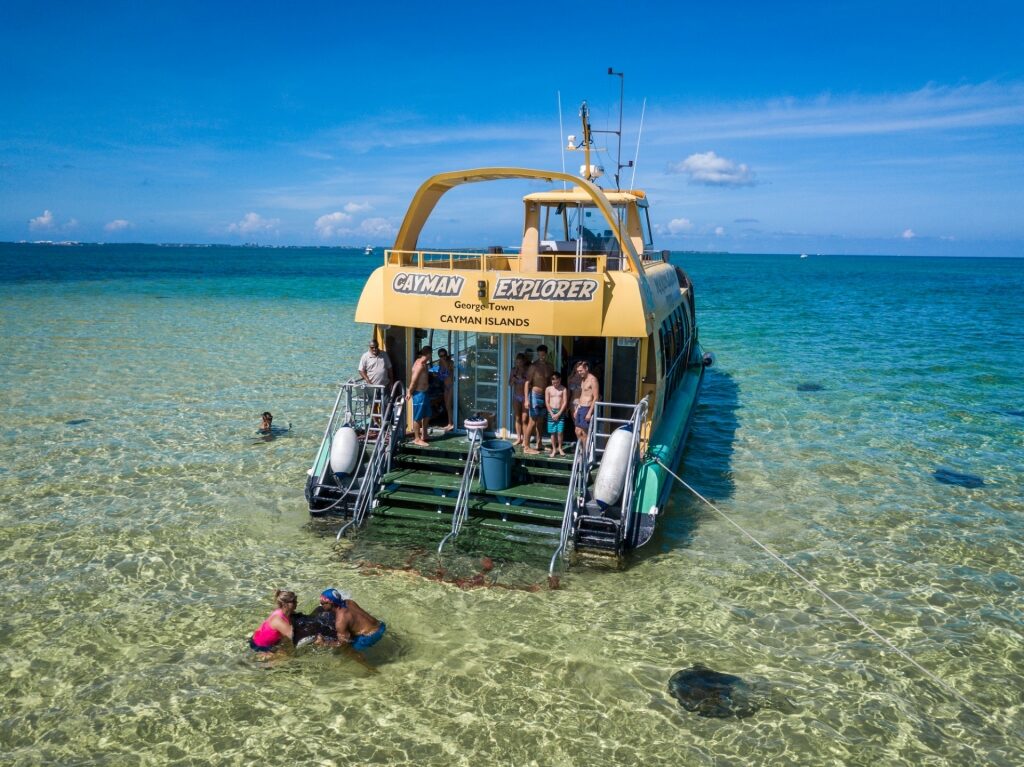
Stingray City, Grand Cayman
At Stingray City, you can interact with gentle southern stingrays as they mill around a sandbar, feeding. You can stand in the sea as they swirl around your feet, or dive into deeper waters.
Any swimmer or diver will see turtles around Grand Cayman. Thanks for this are due to the conservation efforts of Cayman Turtle Centre, which you can tour to learn more.
Aruba
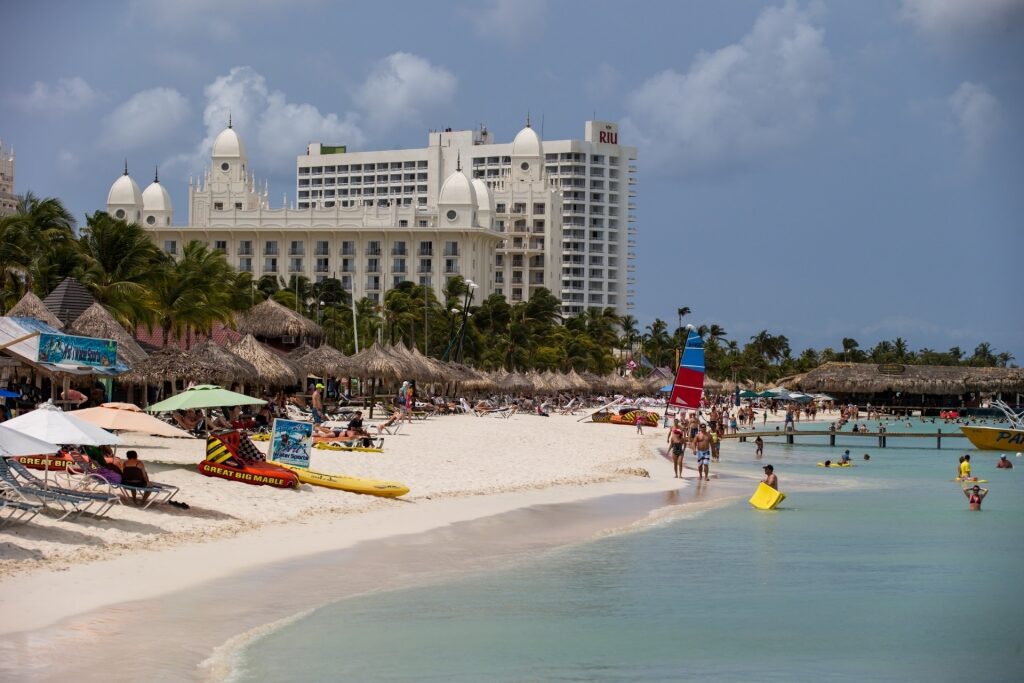
Aruba
The “ABC” islands of Aruba, Bonaire, and Curaçao form a trio of Dutch influence in the Caribbean. From language to cuisine, you’ll find they have much in common, but also marked differences.
Aruba’s outstanding feature is its beaches. The smallest of the ABC Islands, it is the one with most visitors because of beaches like Eagle Beach and Palm Beach.
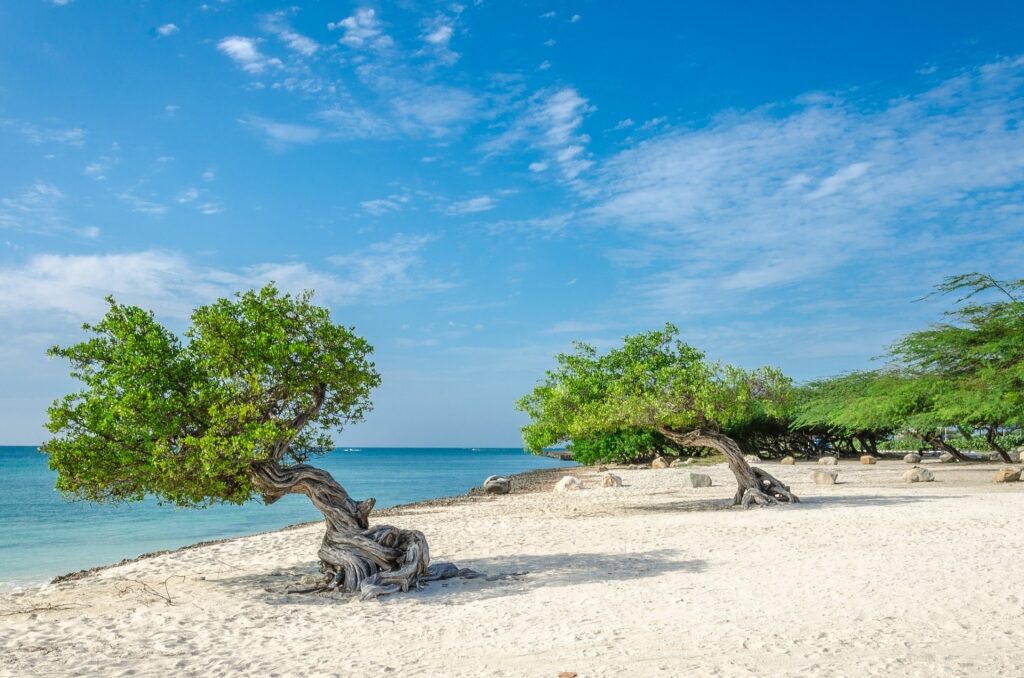
Eagle Beach, Aruba
One of the best beaches in Aruba is Eagle Beach, notable for its pair of gnarled Fofoti trees that dominate many photos of the island. Busier Palm Beach, lined with resort hotels, is the place to find more watersports, bars, and restaurants.
Offshore, there are two private resorts to explore in De Palm Island and Renaissance Island. Both offer activities such as water sports and snorkeling, with Renaissance Island being famous for its Flamingo Beach, with a flock of pink flamingos.
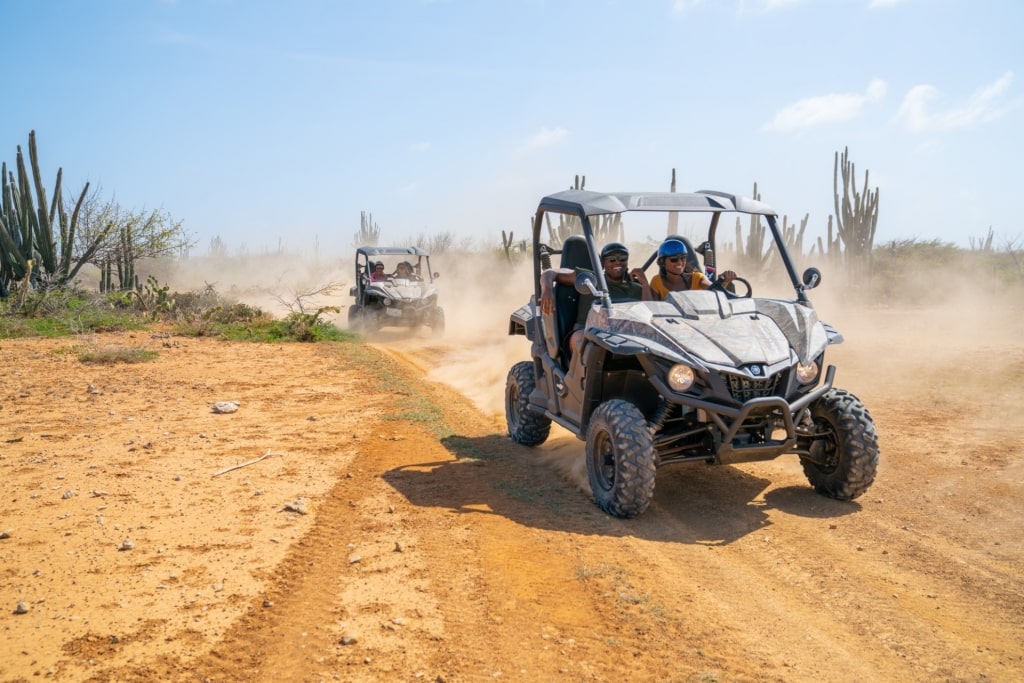
ATV in Aruba
At Arikok National Park, which covers nearly 20 percent of the island, you can see many other birds. Its diverse landscape includes coastline, and hills which you can explore by ATV, as well as the beautiful conchi, natural rock pools.
The Dutch architectural style of Oranjestad, the capital, adds even more charm to its colorful buildings. You’ll find energetic street art and plenty of duty-free shopping.
Bonaire
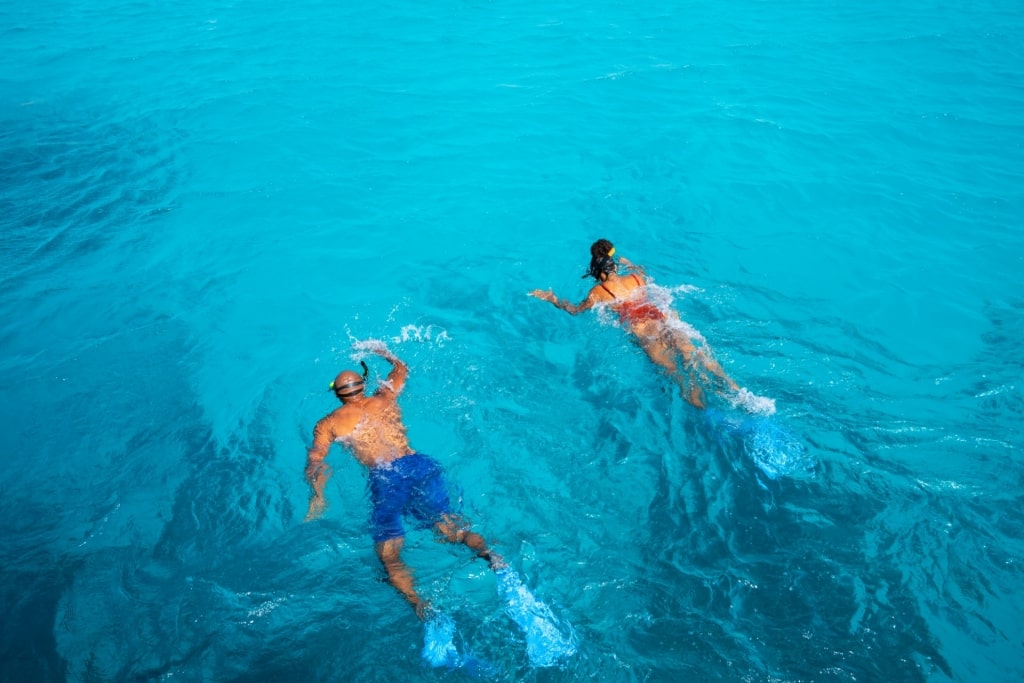
Snorkeling in Bonaire
For divers or snorkelers, Bonaire is certainly among the very best Caribbean islands. Larger than neighboring Aruba, it has a smaller population and a thriving marine life.
The island’s entire coastline is protected within the Bonaire National Marine Park. Strict conservation measures preserve healthy coral reefs, to the delight of divers.
Even better, you can reach many marked dive sites in Bonaire without needing a boat. This access to shore diving saves time and reduces costs for visitors.
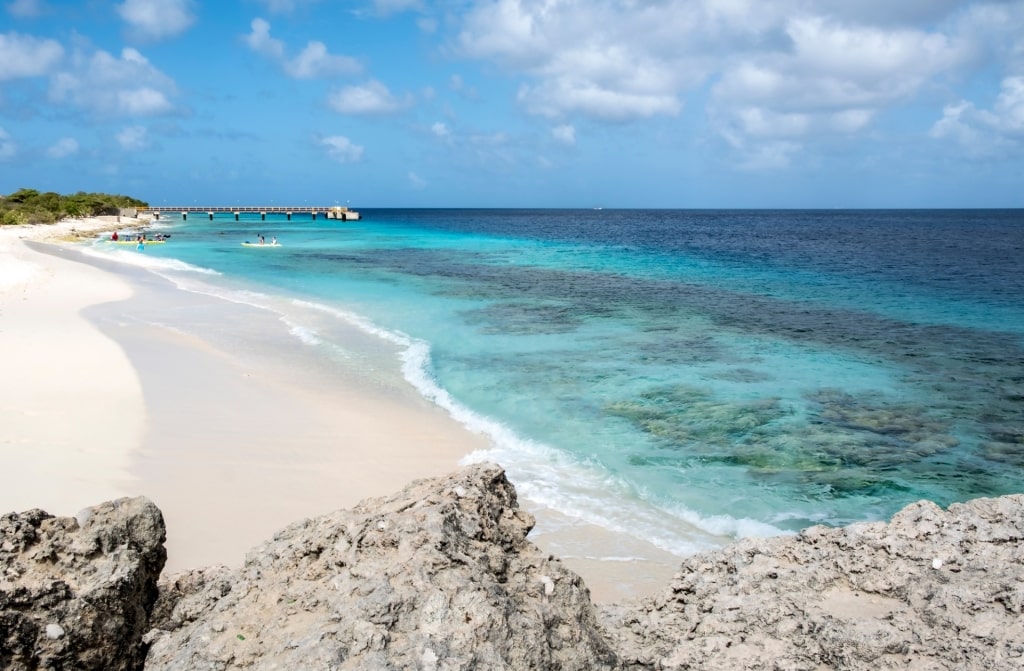
Te Amo Beach, Bonaire
If you don’t even want to leave the beach, you have choices such as Te Amo. This white sand beach in Bonaire is next to Kralendijk, the charming capital, so it has plenty of food trucks.
Te Amo Beach can be busy at times, but just to the south is the quieter Donkey Beach. Wild donkeys are an iconic feature of Bonaire, once used by the island’s salt industry.
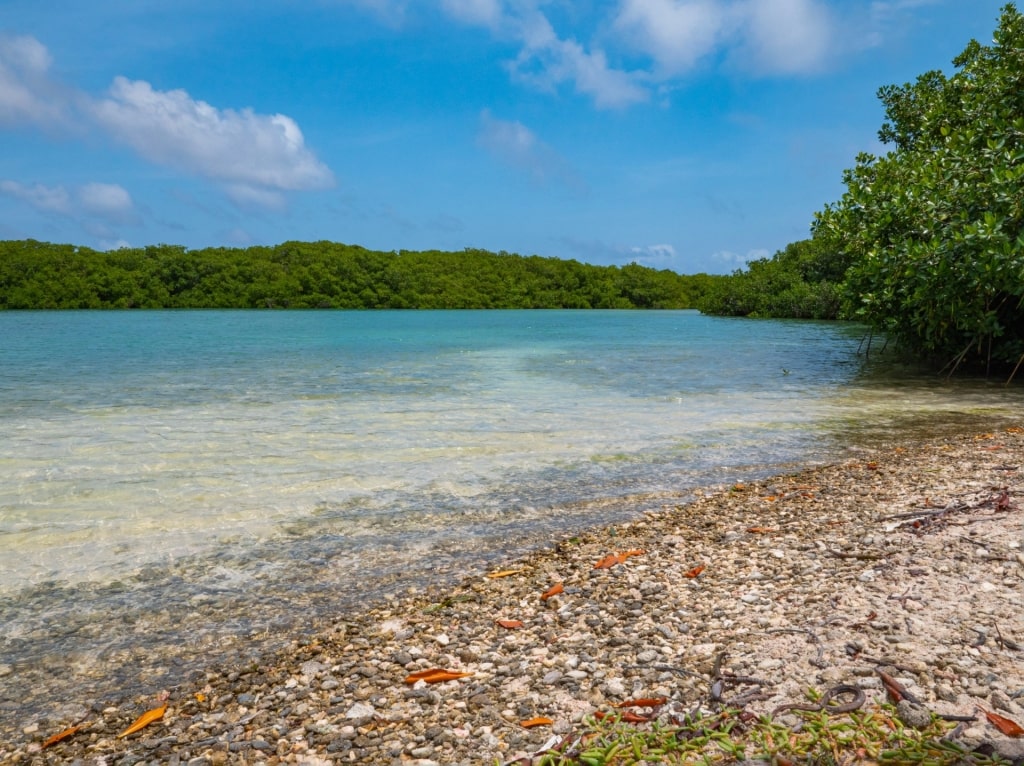
Lac Bay, Bonaire
At Lac Bay, you’ll find another sandy beach, popular for windsurfing, and an attractive coral reef. The lagoon and mangroves here at Sorobon are a refuge for flamingos and herons.
If even laid-back Bonaire is too busy for you, spend some time on Klein Bonaire. This much smaller neighboring island has the same wonderful beaches, dive, and snorkeling sites.
Curaçao
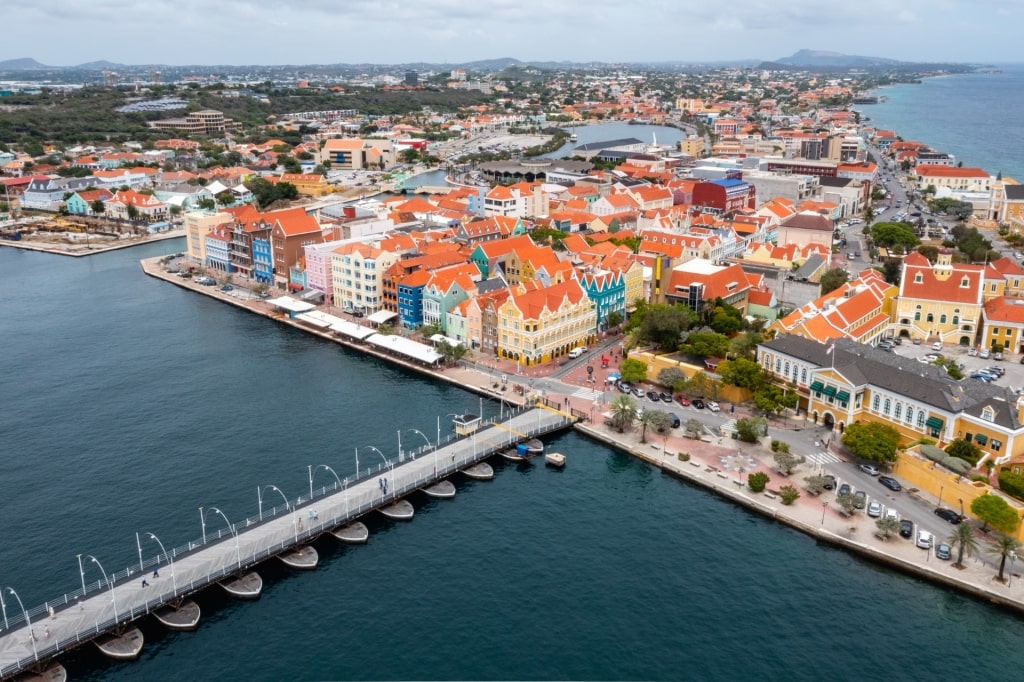
Willemstad, Curaçao
Curaçao is the largest and most populated of the ABC islands. Apart from its perfect beaches, the island is one of the best in the Caribbean for its wide choice of other attractions.
You’ll see this first in the colorful capital or Willemstad, with its pastel-colored buildings lining the waterfront. The Historic Area of Willemstad has sights such as Fort Amsterdam and the “floating” market of vendors from nearby Venezuela.
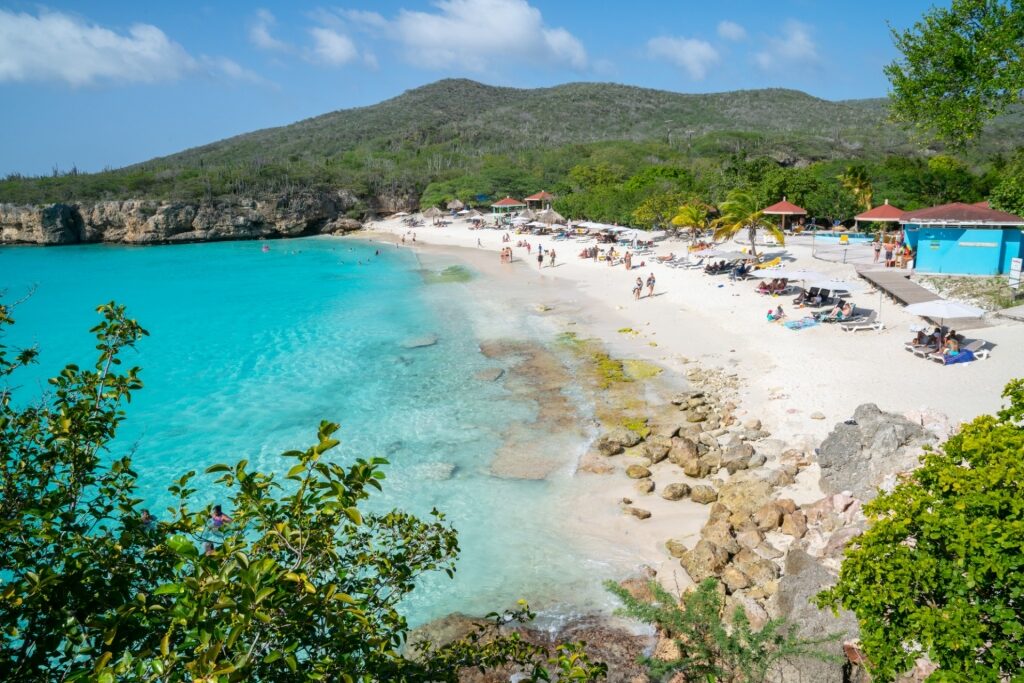
Knip Beach, Curaçao
Typical of Curaçao’s beaches is Playa Kenepa (Knip Beach), on the island’s west side. You’ll enjoy classic Caribbean turquoise waters and powdery sand, with good snorkeling on a vibrant reef.
If snorkeling in Curaçao sparks a deeper interest in underwater life, learn more at Curaçao Sea Aquarium Park. Here you can see sharks, rays, and sea turtles in a natural setting.
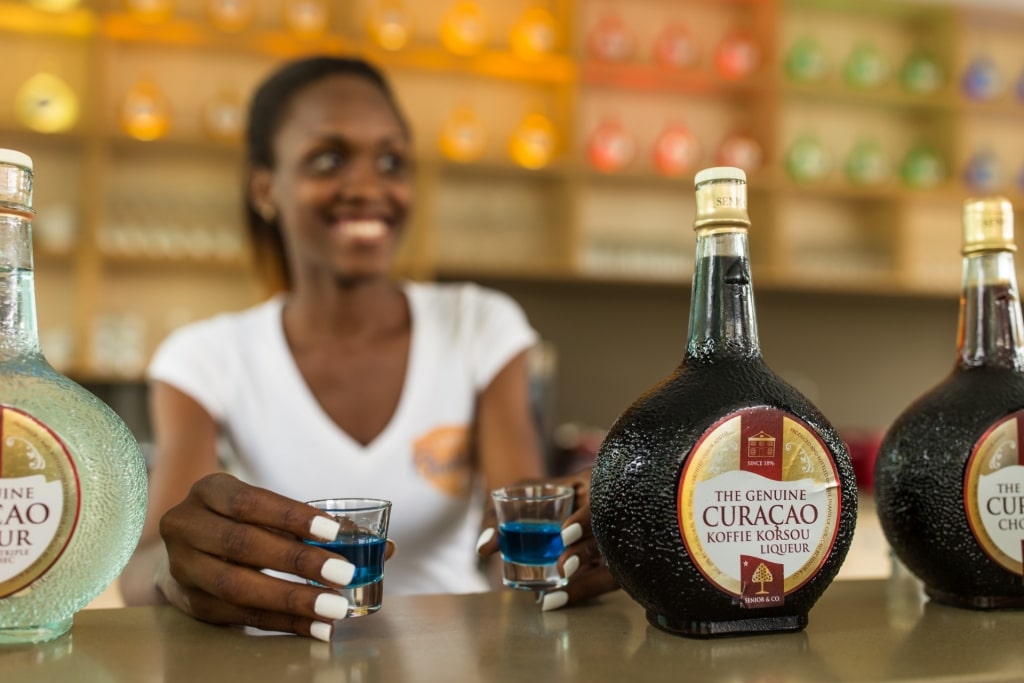
Landhuis Chobolobo, Curaçao
Curaçao has an interesting history, and you can learn more about that at Landhuis Chobolobo. This former plantation house is also the place to taste (and buy) the famous blue Curaçao liqueur.
The island’s distinctive divi divi trees, bent by the wind, are a photographer’s dream. Hike to the viewpoints in Christoffel National Park to see more of the native flora and fauna.
St. Maarten
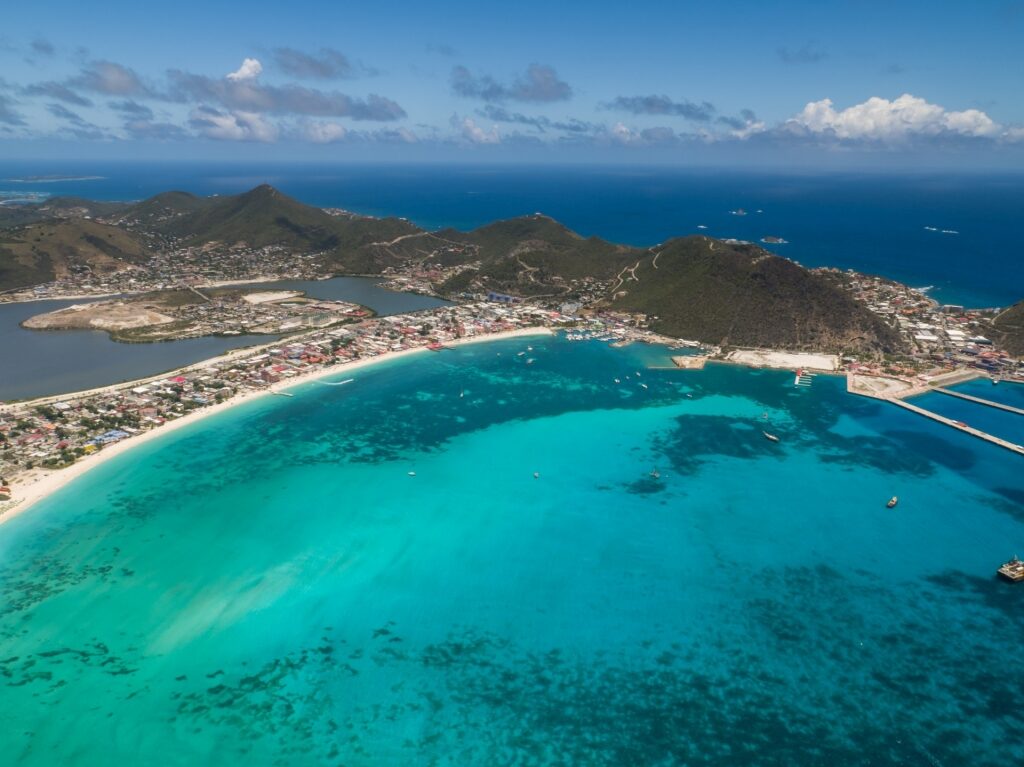
St. Maarten
St. Maarten is divided between two nations: the Netherlands and France. This opportunity to experience both Dutch and French influences puts it firmly among the best Caribbean islands for visitors.
The most famous sight on the island is its airport, where planes soar just over the beach at Maho Bay. Crowds of screaming thrill-seekers and photographers await every landing.
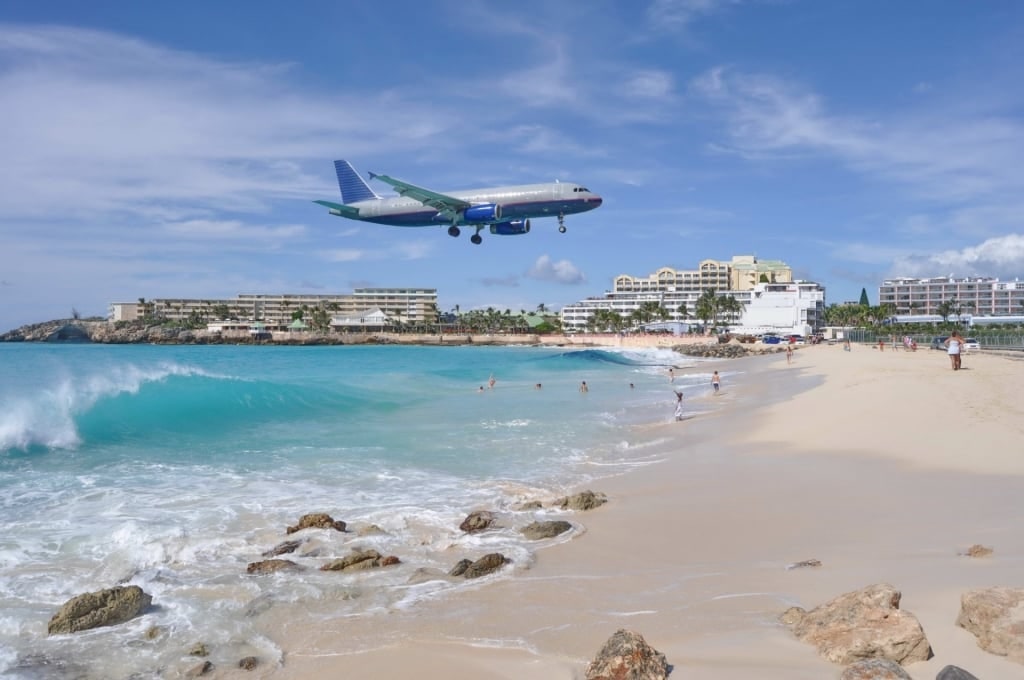
Maho Beach, St. Maarten
That amazing imagery detracts from the actual charm of a very pretty beach in St. Maarten with lively beach bars. Nearby resorts ensure water sports are also readily available.
On the French side of the island is Orient Beach, known as the “St. Tropez of the Caribbean”. Whether that’s for its plentiful bars, or its “clothing optional” rule, you decide.
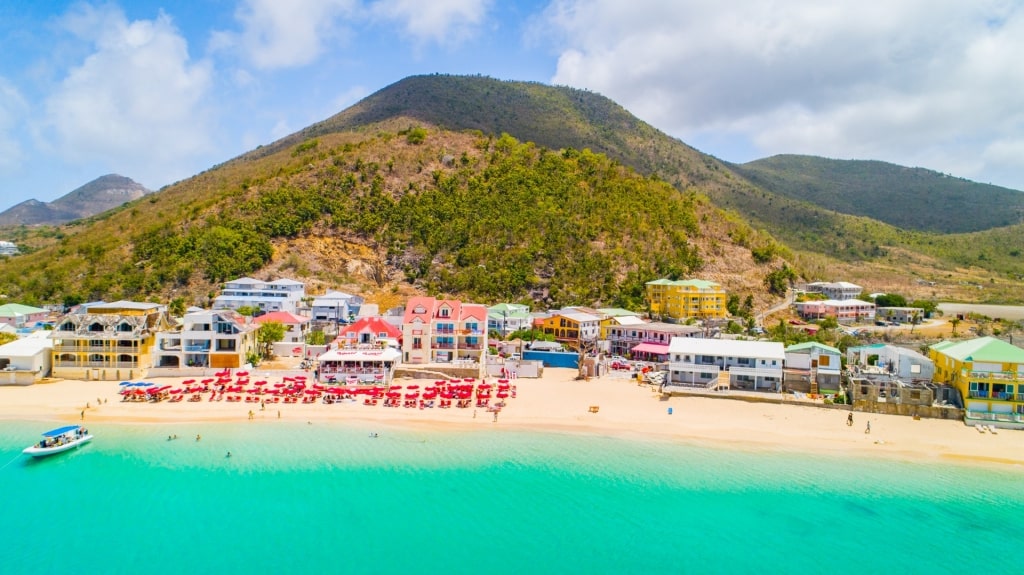
Grand Case, St. Maarten
The beach is ten minutes from Grand Case, whose many restaurants showcase the island’s French and Creole cuisine. The village has stylish boutiques, and craft shops to help while away the time between meals.
Visiting Philipsburg, the colorful capital of the Dutch side, is one of the best things to do in St. Maarten for duty-free shopping. Browse Front Street for jewelry, electronics, and clothing, taking in historic Fort Amsterdam.
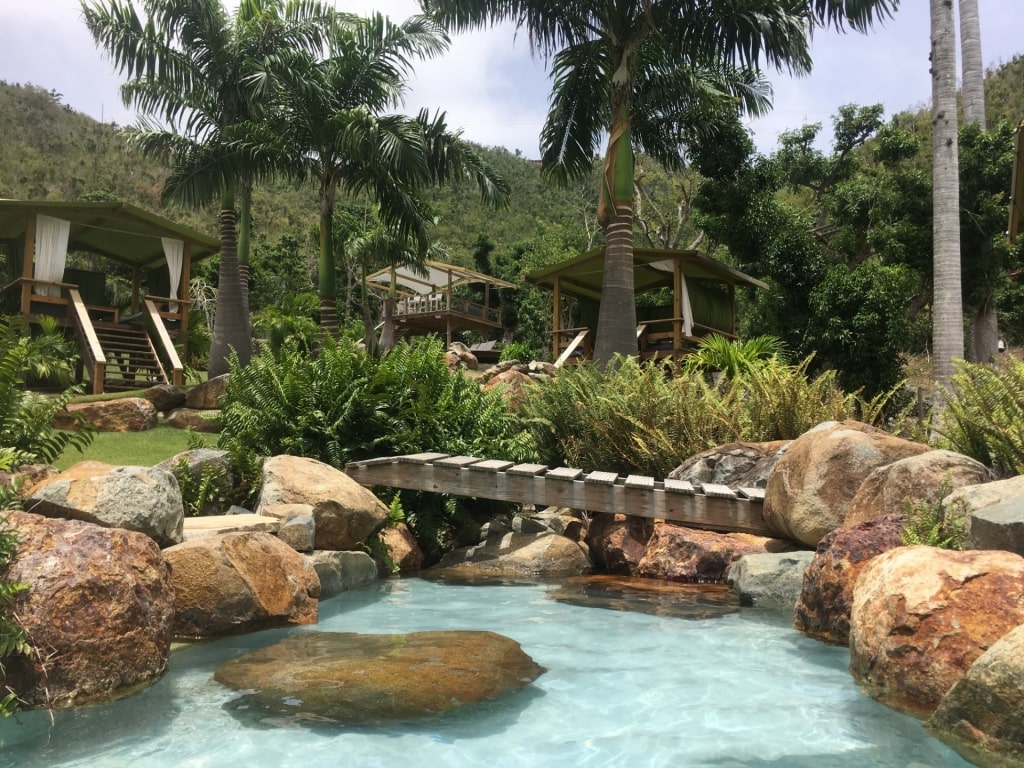
Loterie Farm, St. Maarten
See another side of the island at Loterie Farm, a nature reserve with hiking trails and zip lines. It’s on the side of Pic Paradise, the island’s highest point at 1,391 feet.
Dominica
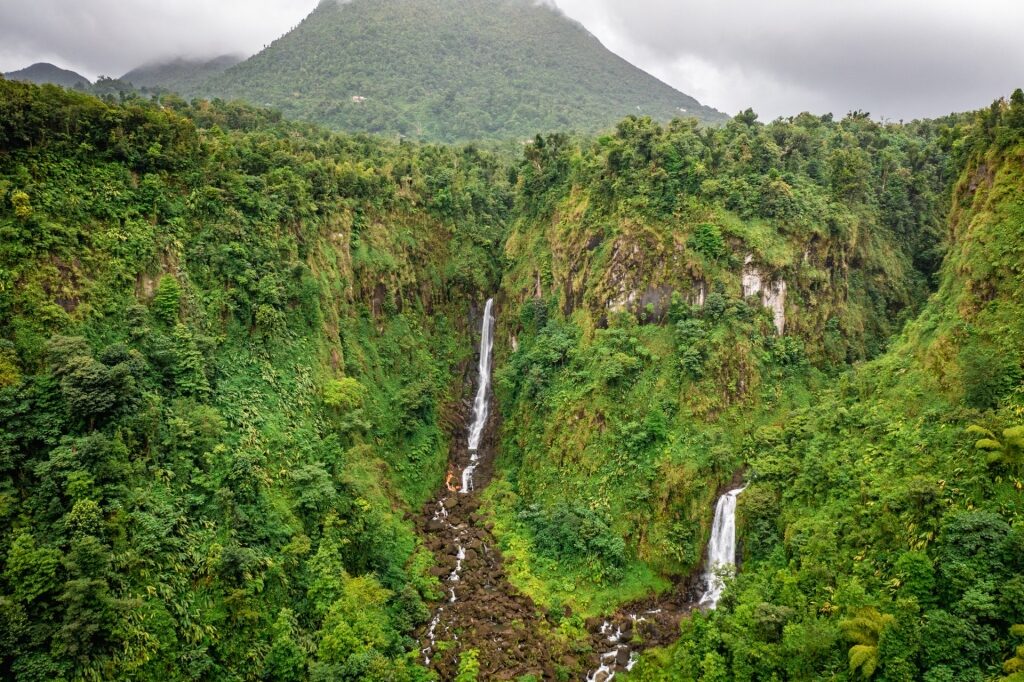
Morne Trois Pitons National Park, Dominica
Called ”The Nature Isle” for its untouched natural beauty, Dominica is a very special Caribbean island. At its heart is the Morne Trois Pitons National Park, a UNESCO World Heritage Site.
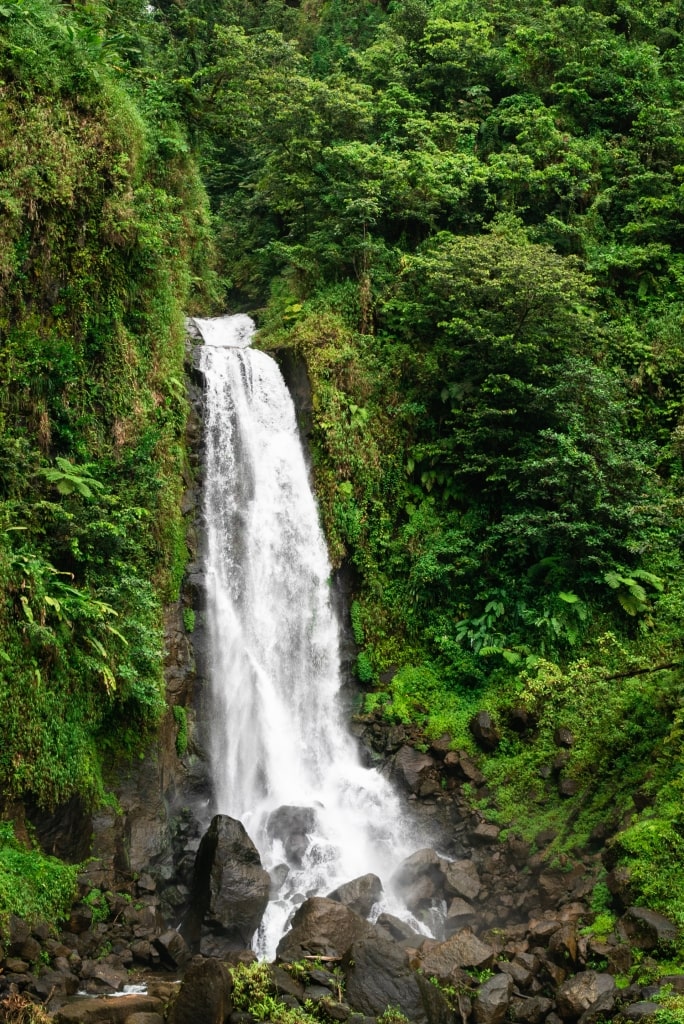
Trafalgar Falls, Dominica
A major sight in the park is Trafalgar Falls, a pair of falls surrounded by thick tropical vegetation. This scenic setting can be enjoyed at leisure with a soak in nearby thermal springs.
Dominica’s hot springs meet the sea at Champagne Beach, near the town of Soufrière. Besides being a warm, bubbly delight for swimmers, snorkelers will discover some unique geological formations.
Dominica’s coastline is more rugged than many other Caribbean destinations, so a guided snorkel tour is a recommended option. The reward is a greater insight into coral gardens and the diverse marine life.
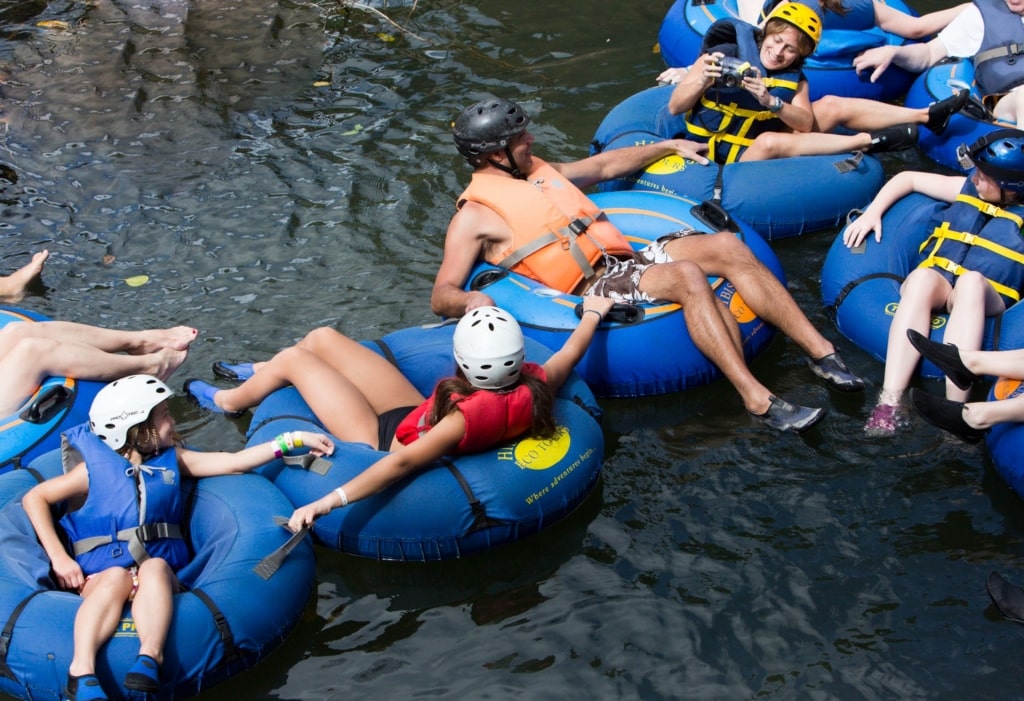
River tubing in Dominica
Back on land, the island’s embrace of nature can be appreciated at Hibiscus Eco-Village. A tubing adventure down the Pagua River is one of the best things to do in Dominica, which takes you through rock pools and mini-rapids.
In Roseau, Dominica’s capital, you’ll find the beautiful Botanical Gardens. One of the oldest botanical gardens in the Caribbean, it’s most famous for the school bus hit by a falling tree in a 1979 hurricane. The bus, incidentally, was empty at the time, but has been left in place as an exhibit demonstrating the power of hurricanes.
Grenada
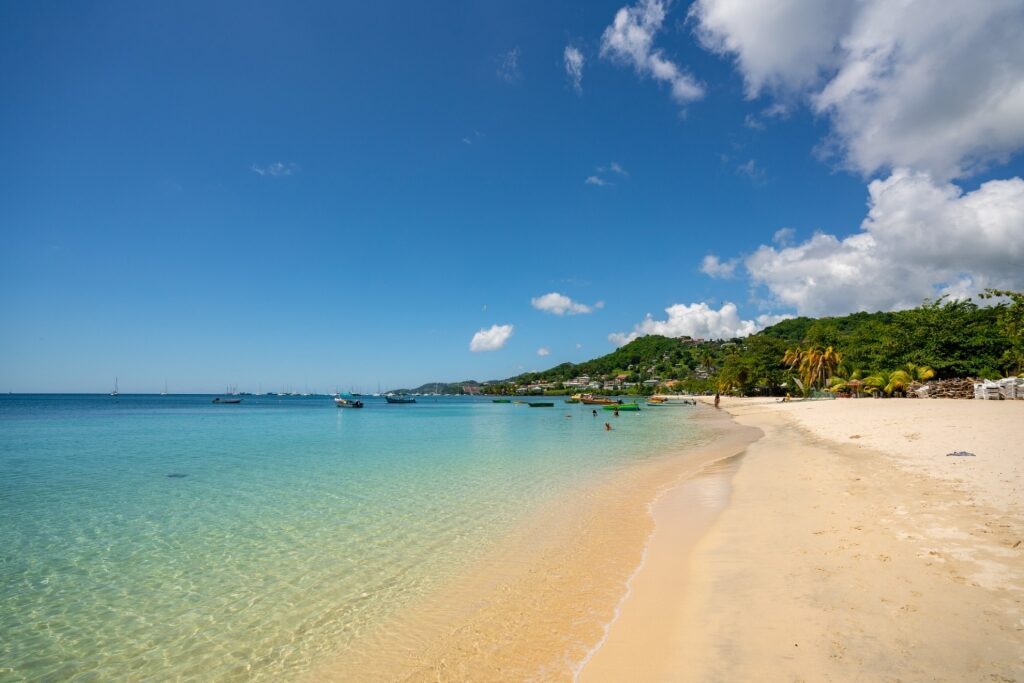
Grand Anse Beach, Grenada
Grenada is called the “Spice Isle” for its nutmeg, cinnamon, and clove plantations. That exotic smell is only one of the factors helping it stand out from other Caribbean islands.
One of Grenada’s best beaches is Grand Anse. With two miles of soft white sand, it’s ideal for relaxation and enjoying watersports.
Divers and snorkelers love Grenada’s Underwater Sculpture Park, the world’s first. This artificial reef features haunting works such as Vicissitudes, a group of 26 children holding hands.
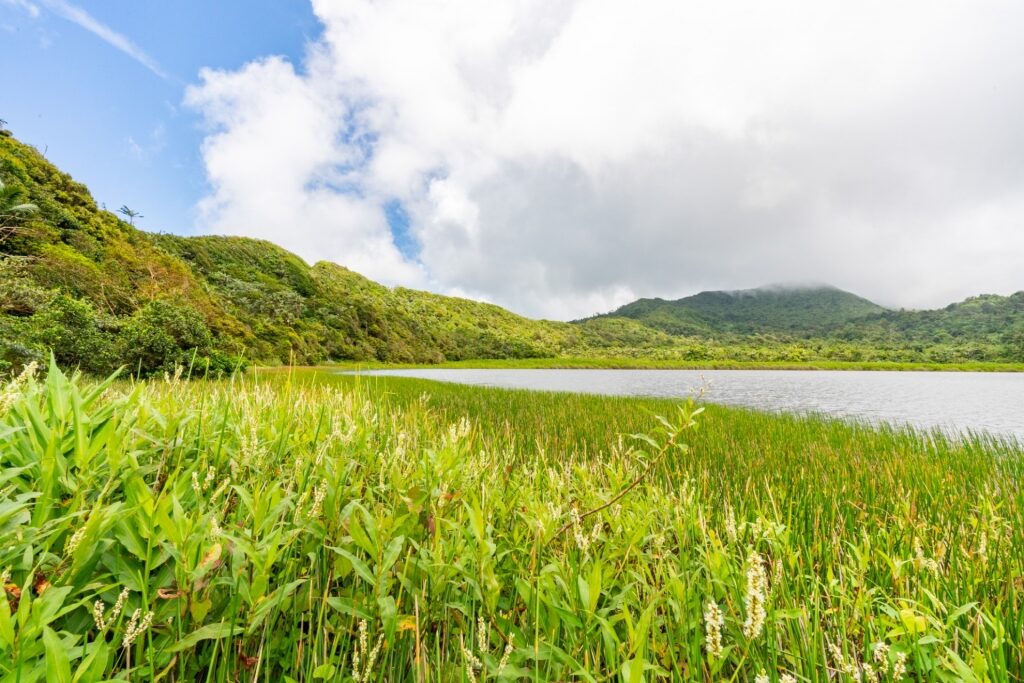
Grand Etang Lake, Grenada
At the heart of the island is Grand Etang Lake, a crater lake from an extinct volcano. It’s the center of a national park where you can enjoy hiking and birdwatching.
The park is home to some of the best waterfalls in the Caribbean, including Seven Sisters Falls and Concord Falls. Concord is a set of three waterfalls, among which you can swim in rock pools.
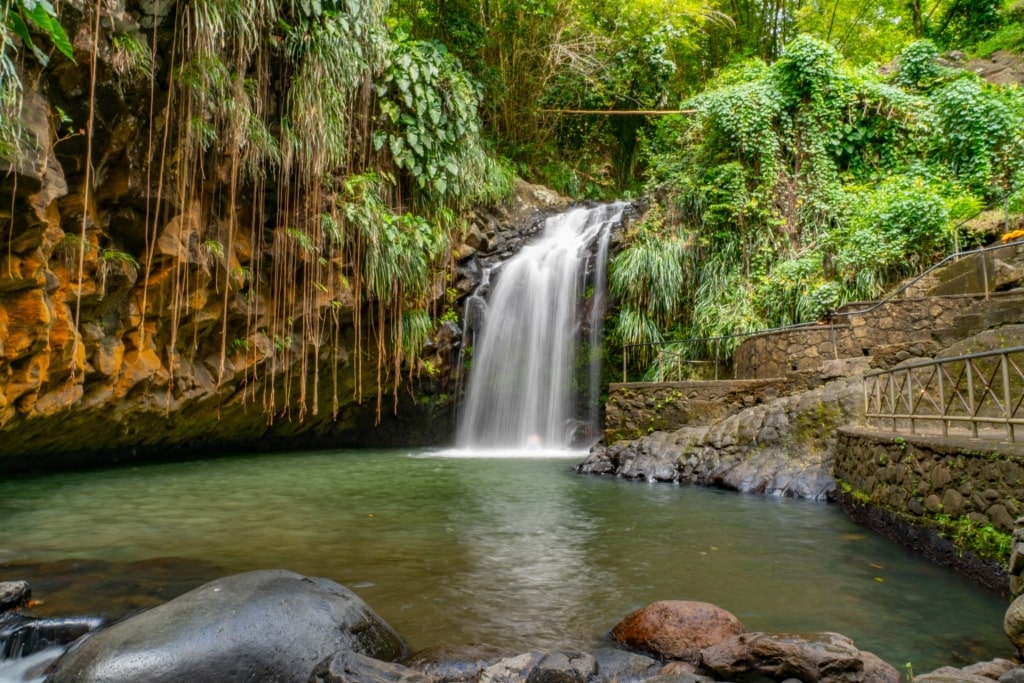
Annandale Waterfall, Grenada
Not far from St. George’s, the capital of Grenada, is Annandale Waterfall. This is another scenic spot to swim in, while local divers will jump from the top of the falls.
The island’s exotic richness can be tasted in its chocolate. Tour the Grenada Chocolate Company to learn about cocoa production, and sample the local product.
Read: Best Things to Do in Grenada
Antigua
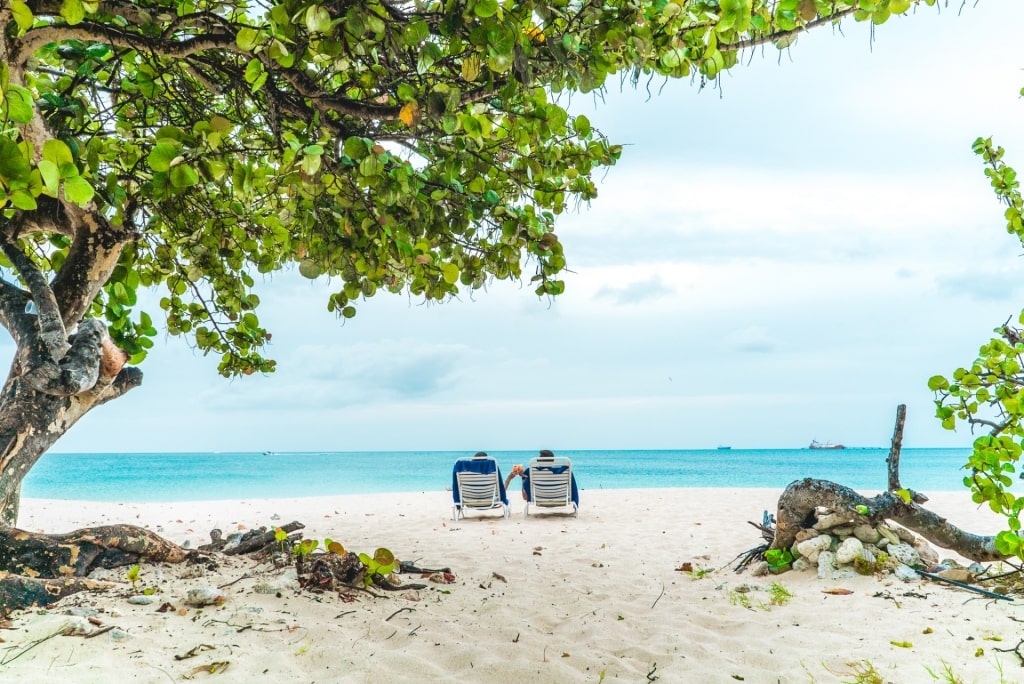
Antigua
Antigua boasts 365 beaches—one for each day of the year. That’s reason enough to make it one of the Caribbean’s best islands for sun-worshipers.
Given that choice, you can find a beach for every mood, whether you want energy, or serenity, and peace. Popular beaches in Antigua include Dickenson Bay, Jolly Beach, and the pink-sand Half Moon Bay.
One of the prettiest is Galleon beach, known for its scenic setting backed by green hills within English Harbour. The many yachts on the water make for an even prettier picture.
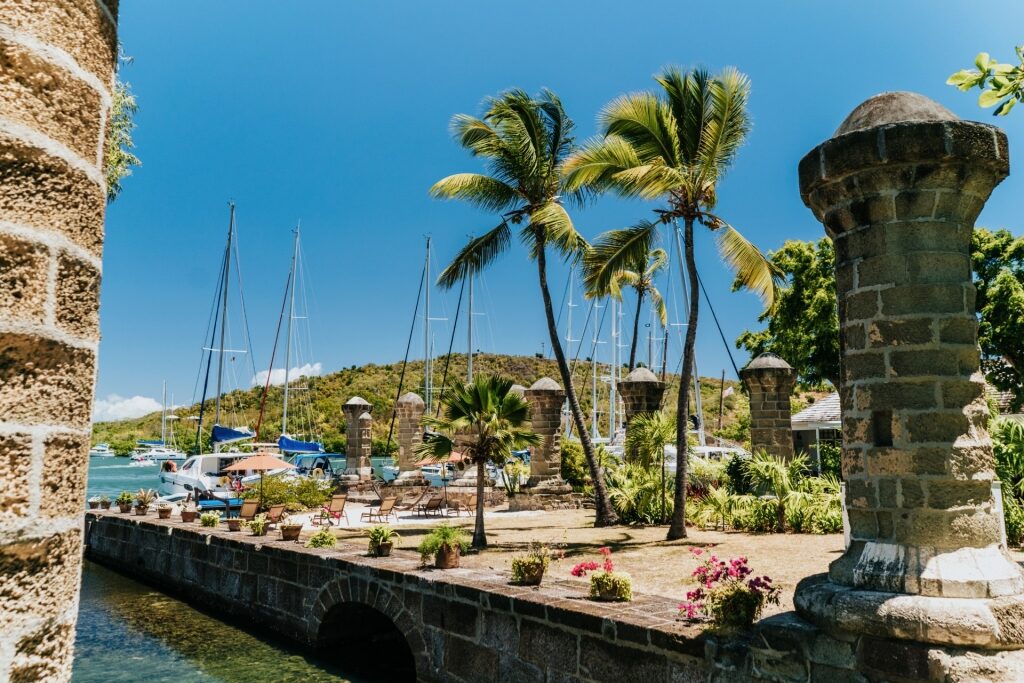
Nelson’s Dockyard, Antigua
English Harbour is also home to Nelson’s Dockyard, a former British naval base named for Admiral Horatio Nelson. It’s now a walkable mix of restored colonial-era buildings, museums, restaurants, and shops.
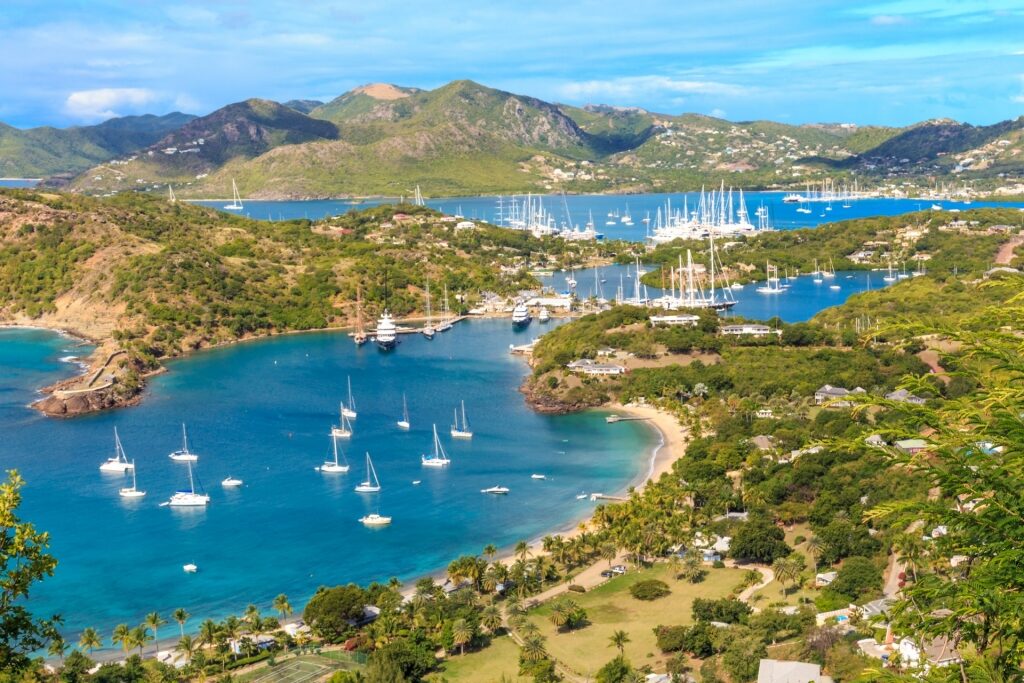
View from Shirley Heights, Antigua
Overlooking English Harbour is Shirley Heights, a historic military complex. Its strategic position to defend the harbor also means it has breathtaking panoramic views over the Caribbean.
Antigua’s history, like many other Caribbean islands, was tied up with the sugar trade. Visit Betty’s Hope, a former sugar plantation, to see restored sugar mills, a museum, and the ruined great house.
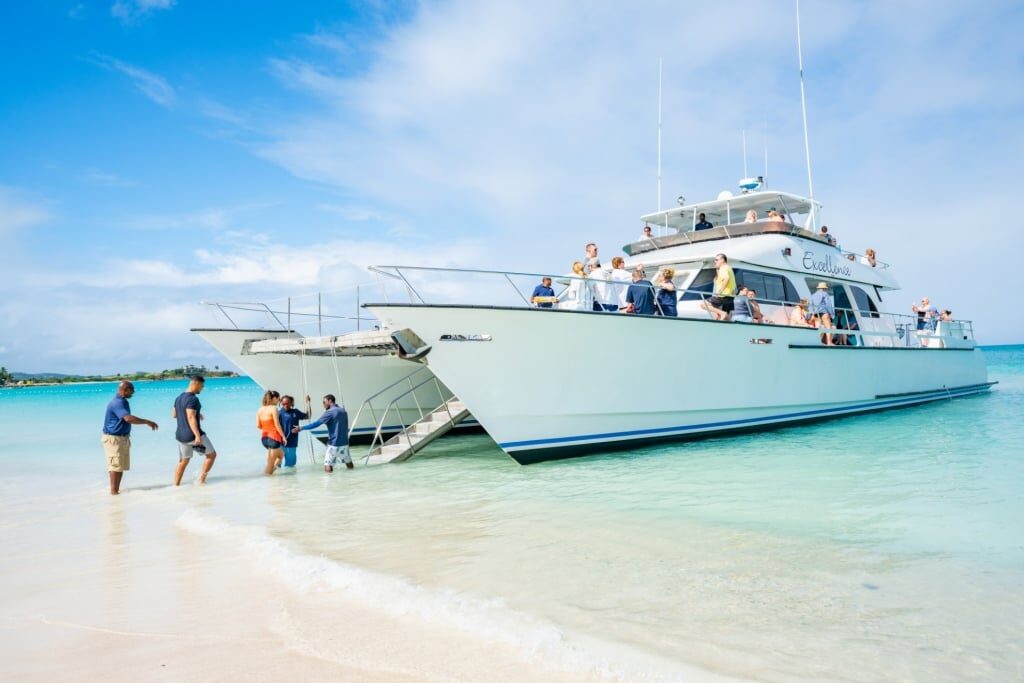
Beach in Antigua
Don’t leave without enjoying a sailing trip, perhaps to the sister island of Barbuda. Antigua is a Caribbean sailing and yachting capital, known for events such as Antigua Sailing Week.
Tortola
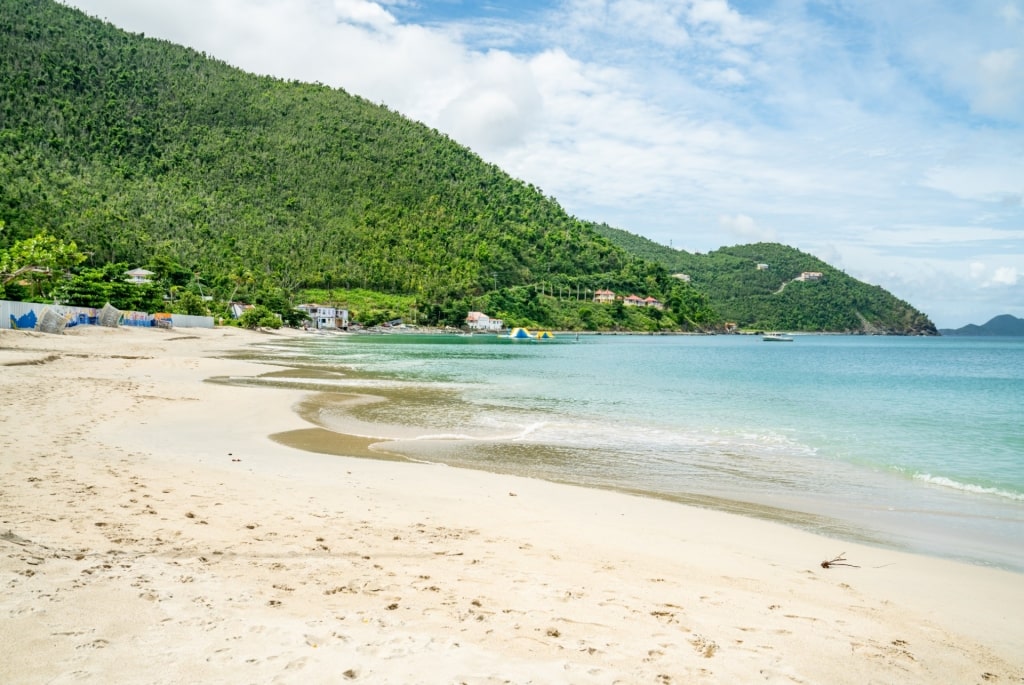
Cane Garden Bay, Tortola
Tortola, while the largest and most populated of the British Virgin Islands, is still a tiny slice of paradise. Its beautiful beaches and lush landscapes make up an essential Caribbean destination for anybody who loves a laid-back lifestyle.
One of the best things to do in Tortola is to visit Cane Garden Bay, a curve of palm-lined golden sand. The bay is dotted with beach bars and restaurants where you can laze away whole days.
The drink of choice here should be Callwood Rum, made very close by. You can tour the distillery for a tasting, and see the rum being made.
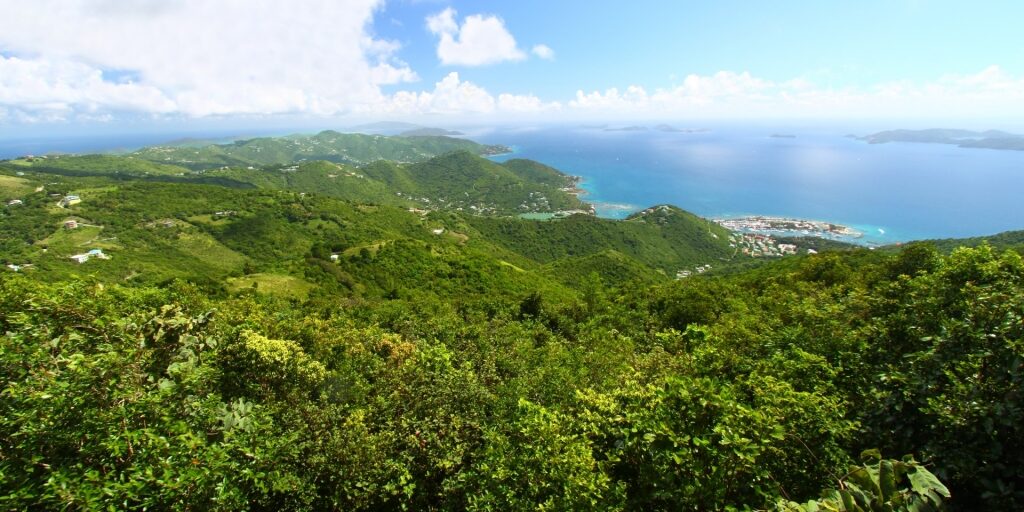
Sage Mountain National Park, Tortola
In Sage Mountain National Park, you can hike the highest peak in all the Virgin Islands at 1,716 feet. Two trails take you through giant trees and trailing vines to the wonderful views at Skyworld restaurant.
In Road Town, the tiny capital of Tortola, you’ll find the J.R. O’Neal Botanic Gardens. Trees provide welcome shade while you admire the many tropical plants and flowers.
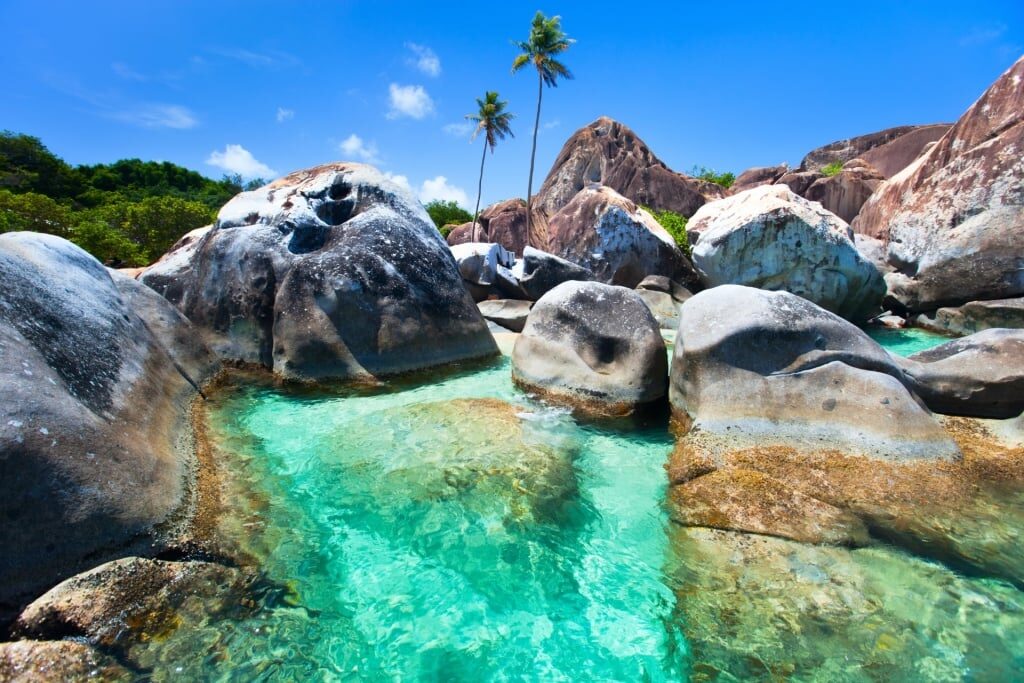
The Baths at Virgin Gorda
To explore further afield, visit the nearby island of Virgin Gorda. Here, The Baths are a set of massive granite boulders forming caves and secluded rock pools.
Another excursion is to the White Bay, on the island of Jost Van Dyke. This beautiful beach is home to the Soggy Dollar Bar, the claimed birthplace of the Caribbean cocktail known as the “Painkiller”.
St. Thomas
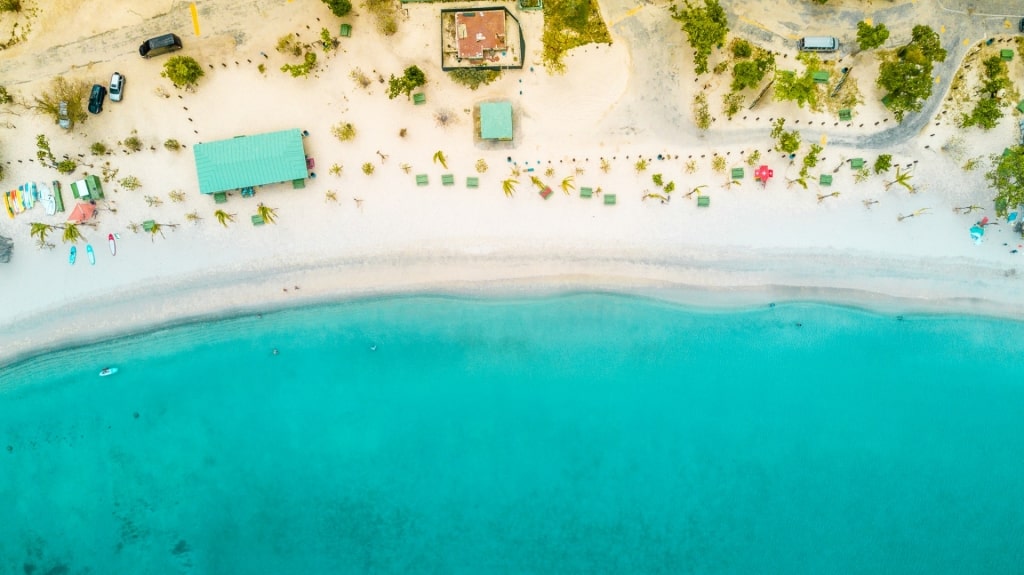
Magens Bay, St. Thomas
Part of the United States Virgin Islands, St. Thomas stands out for its fantastic beaches. The mile-long beach at Magens Bay is one of the world’s finest.
What makes it special is the white sand that carries on into the sea, giving great visibility. Lined with shady palm trees, this pretty beach in St. Thomas has several bars, as well as sun loungers for rent.
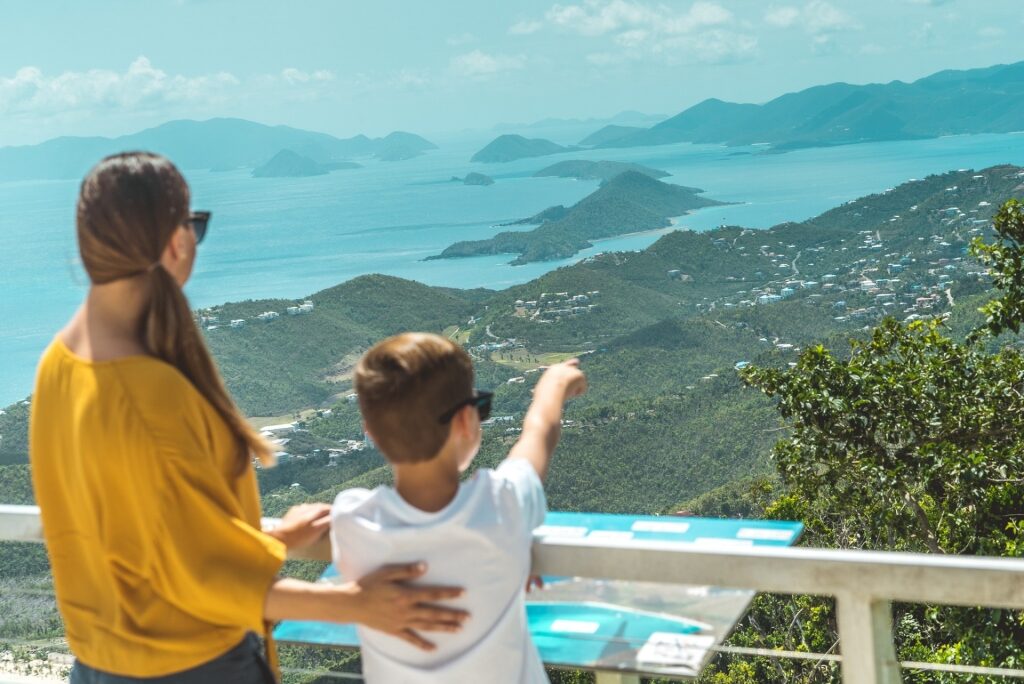
Mountain Top, St. Thomas
If you can drag yourself away, the first stop should be Mountain Top for its amazing views over St. Thomas and its neighboring islands. This viewpoint on St. Peter Mountain is also famous as the birthplace of the banana daiquiri.
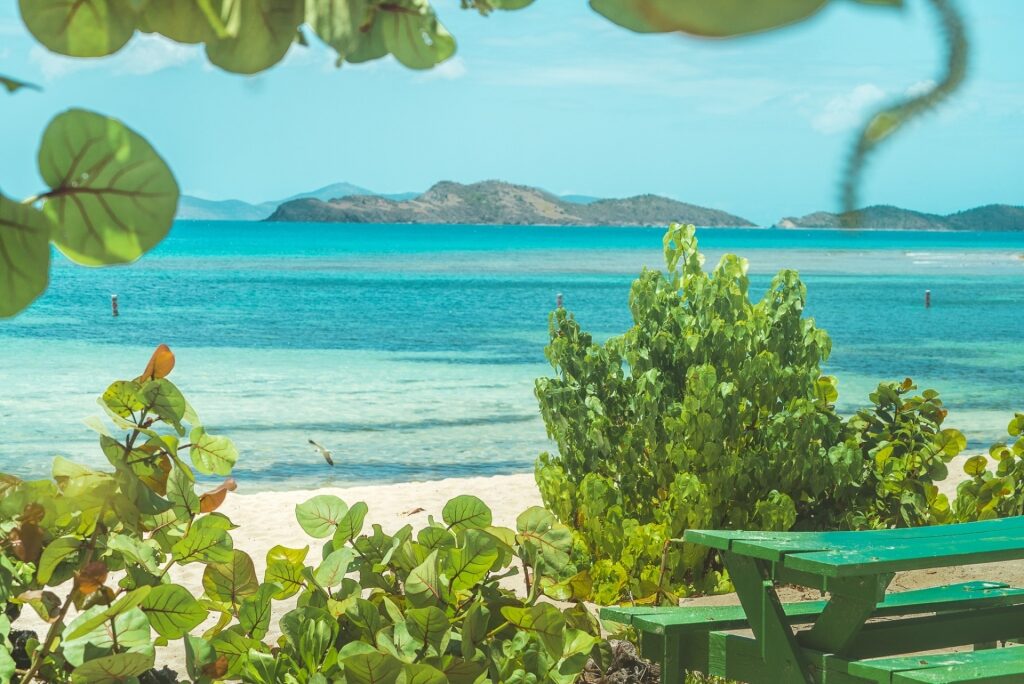
Smith Bay Beach Park & Eco Reserve, St. Thomas
At Smith Bay Beach Park & Eco Reserve, you can enjoy another side of the island. Along with hiking on nature trials, you can also relax on the pink-ish sand of unspoiled Lindquist Beach.
In Charlotte Amalie, the capital of the U.S. Virgin Islands, you can soak up the historical architecture, and duty-free shopping in St. Thomas. Visit Blackbeard’s Castle for the panoramic views and tales of Caribbean pirates.
The quaintest attraction in the town is the street of 99 Steps. Originally built in the 18th century and now lined with bright Caribbean townhouses, it is a short climb through history.
St. Kitts
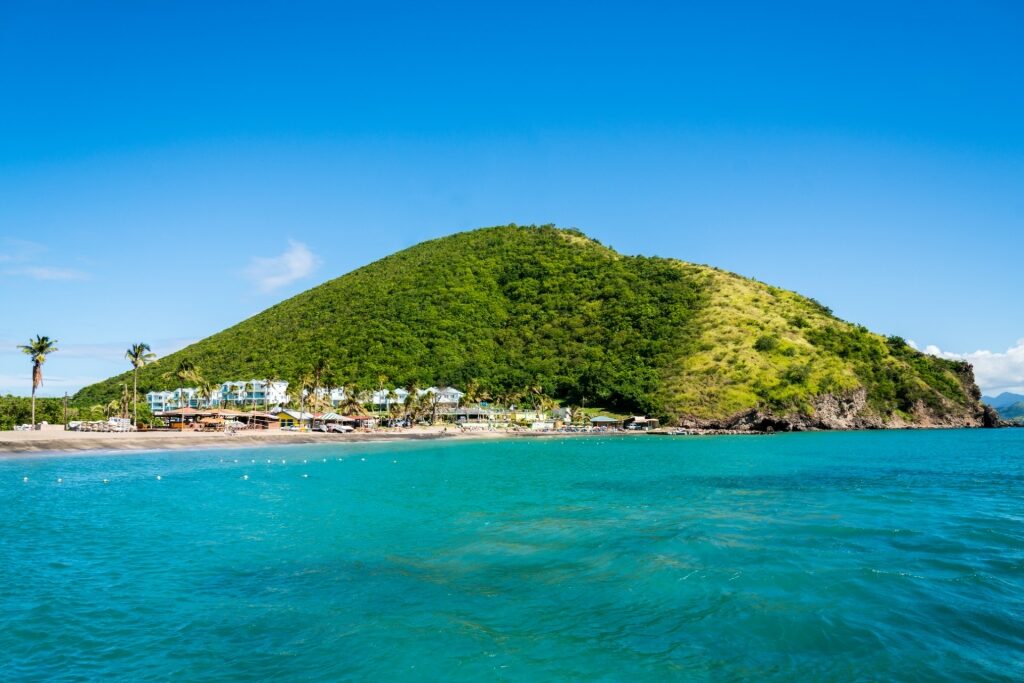
St. Kitts
The island nation of St. Kitts & Nevis makes for an enthralling Caribbean destination. St Kitts, the larger island, has a surprising variety of landscapes and historic attractions.
One of the best things to do in St. Kitts is to ride the St. Kitts Scenic Railway, a quaint double-decker train, for breathtaking views of the island. You’ll see coastline, cane fields, and tropical forest.
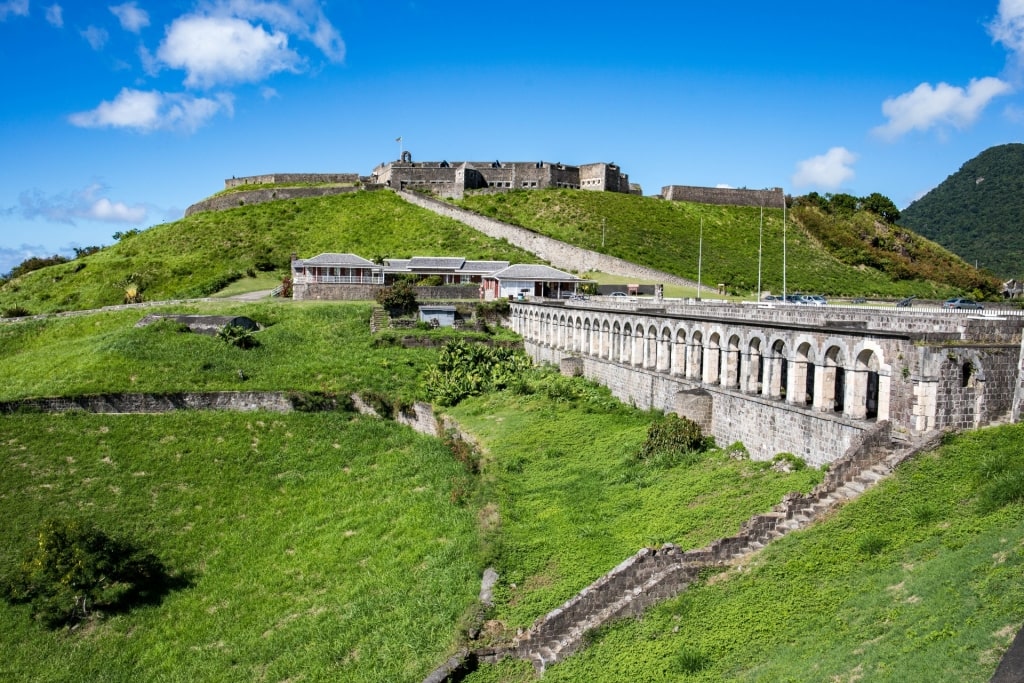
Brimstone Hill Fortress National Park, St. Kitts
The former British colonial stronghold at Brimstone Hill Fortress National Park enjoys good views over St. Kitts as well. It’s among the best-preserved historical fortifications in the Americas.
At Romney Manor, you will find the oldest surviving sugar plantation in the Caribbean. The botanic gardens here are a delight, and its Caribelle Batik Studio showcases this colorful traditional art.
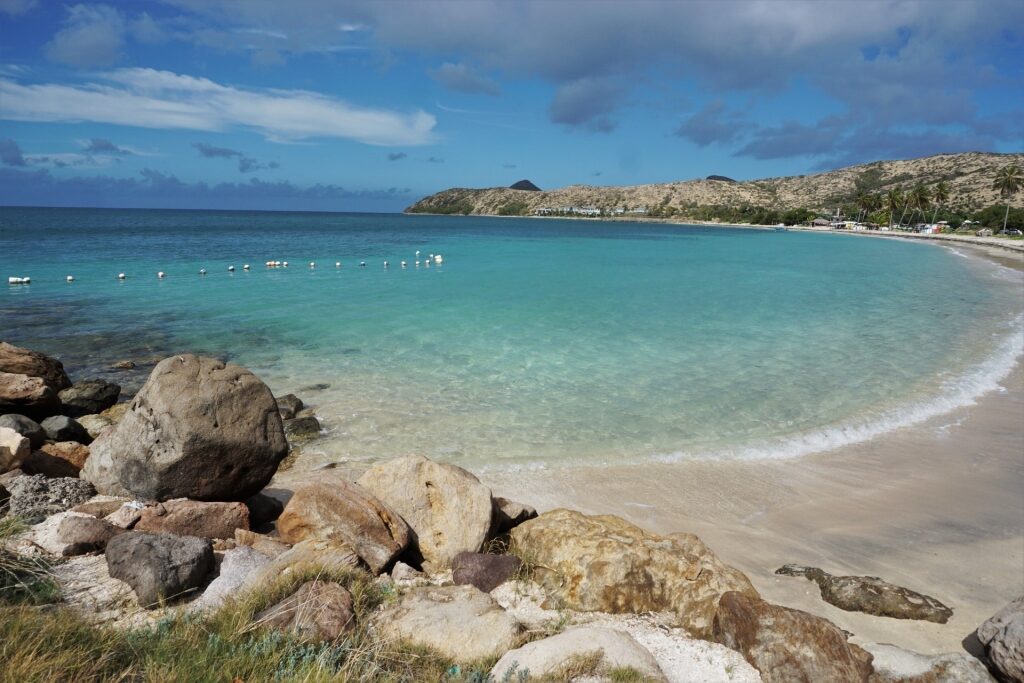
Cockleshell Bay, St. Kitts
Of course, like any Caribbean destination, you’ll want to spend time on, or near the water. Snorkel off a glorious beach in St. Kitts—Cockleshell Bay is the most popular—or join a catamaran cruise to find more secluded spots.
The short ferry crossing to St. Kitts’ tiny neighbor of Nevis is another adventure. Look for crafts in the tiny “capital” of Charlestown, and visit the Alexander Hamilton Museum dedicated to the US Founding Father.
The Botanical Gardens of Nevis are another worthwhile stop. Among the tropical plants, flowers, and trees, you’ll find a restaurant and gift shop.
Read: Eastern Caribbean vs. Western Caribbean
Tobago
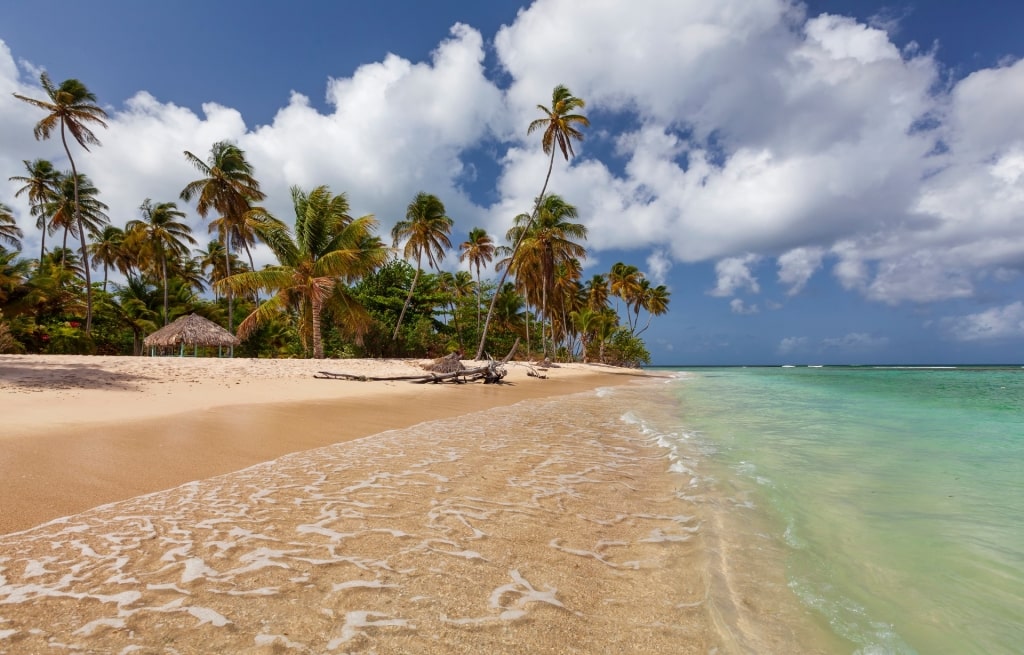
Pigeon Point, Tobago
Tobago benefits from the presence of its larger, and much better-known neighbor, Trinidad. A relative lack of development has helped preserve the natural beauty of this idyllic Caribbean island.
Among Tobago’s many lovely beaches, Pigeon Point stands out for its white sands, and water sports. It’s within Pigeon Point Heritage Park, but many visitors come just to see the famous thatched-roof jetty.
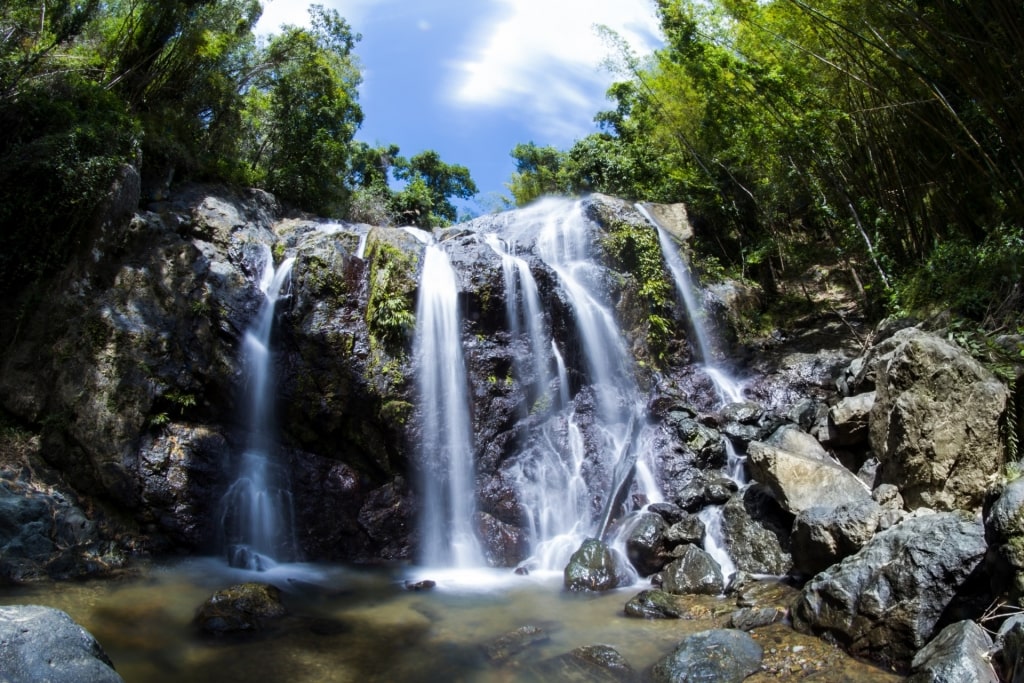
Argyle Waterfall, Tobago
Landmarks of the island include 175-feet-tall Argyle Waterfall. To reach it means a short rainforest trek, with the reward being a dip in the fall’s beautiful rock pool.
Another one of the best things to do in Tobago is to swim at Nylon Pool, a shallow sandbar several miles off the island’s west coast. Legend has it that couples who kiss here underwater will have a lifetime of happiness.
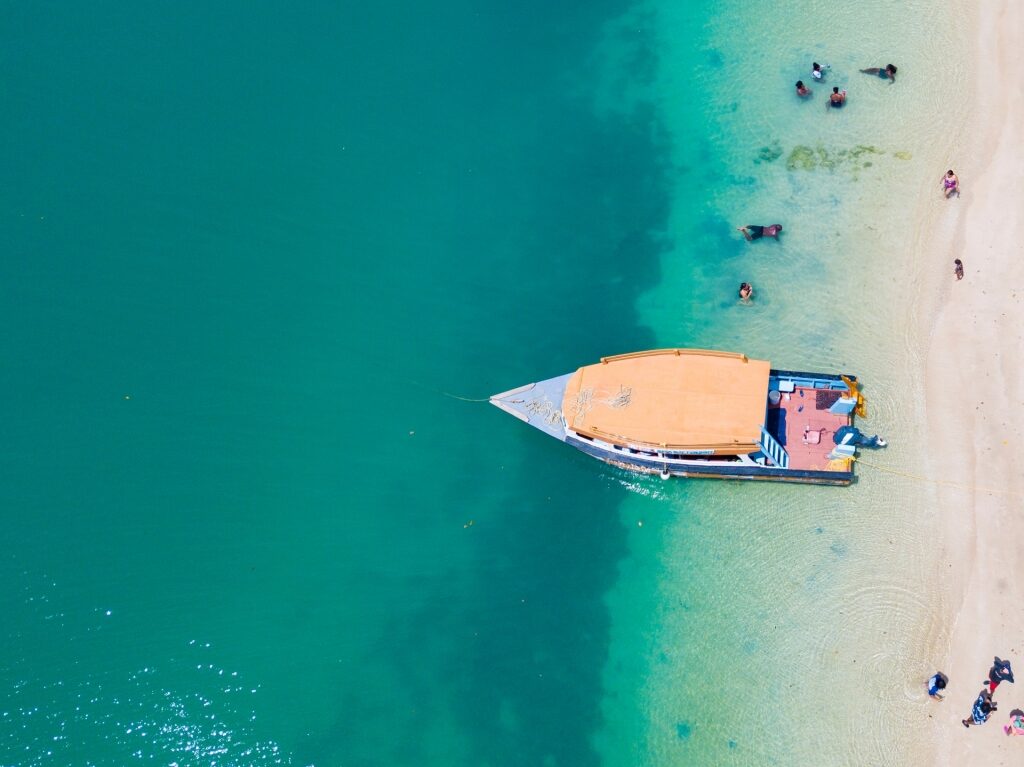
Buccoo Reef, Tobago
Boat trips to Nylon Pool also visit Buccoo Reef for a snorkeling tour. Glass-bottom boats help those who don’t want to swim see the undersea world.
Away from the water, Tobago’s capital of Scarborough has a thriving local market. Stalls sell fresh produce, spices, and local crafts.
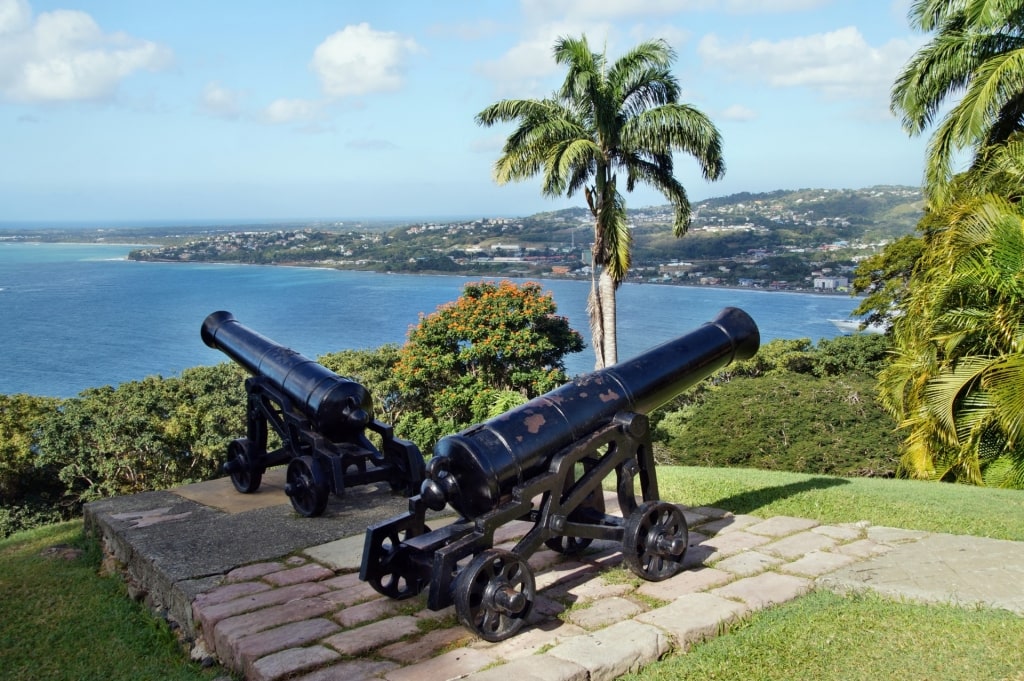
Fort King George, Tobago
At Fort King George, you can take in the impressive views, or visit The Tobago Museum in the former Governor’s House. The fort dates back to the 18th century and cannons still stand amid its extensive remains.
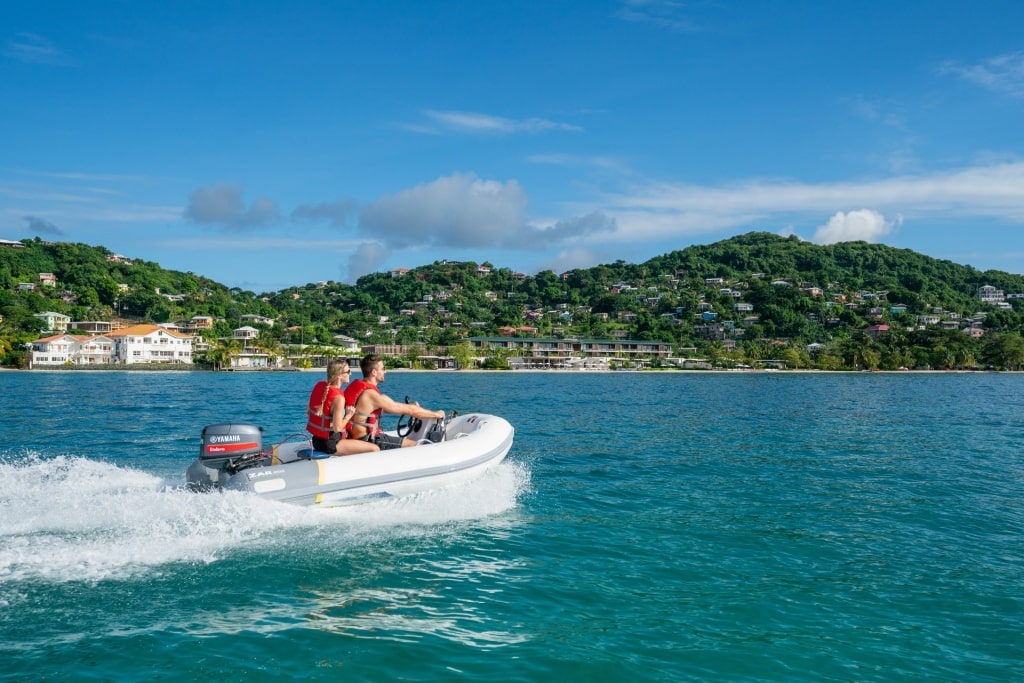
Grenada
Has this guide to the best islands in the Caribbean tempted you to start ticking them off your own wish list? Browse our itineraries to find the best Caribbean cruises for you and your loved ones.
